SNVS506J May 2008 – December 2015 LM3691
PRODUCTION DATA.
- 1 Features
- 2 Applications
- 3 Description
- 4 Revision History
- 5 Voltage Options
- 6 Pin Configuration and Functions
- 7 Specifications
- 8 Detailed Description
- 9 Application and Implementation
- 10Power Supply Recommendations
- 11Layout
- 12Device and Documentation Support
- 13Mechanical, Packaging, and Orderable Information
7 Specifications
7.1 Absolute Maximum Ratings
over operating free-air temperature range (unless otherwise noted)(1)(2)| MIN | MAX | UNIT | ||
|---|---|---|---|---|
| VIN pin to GND | −0.2 | 6 | V | |
| EN, MODE, FB, SW pins | (GND − 0.2) | VIN + 0.2 | V | |
| Junction temperature (TJ-MAX) | 150 | °C | ||
| Continuous power dissipation(3) | Internally Limited | |||
| Maximum lead temperature (soldering, 10 seconds) | 260 | °C | ||
| Storage temperature, Tstg | 150 | °C | ||
(1) Stresses beyond those listed under Absolute Maximum Ratings may cause permanent damage to the device. These are stress ratings only, which do not imply functional operation of the device at these or any other conditions beyond those indicated under Recommended Operating Conditions. Exposure to absolute-maximum-rated conditions for extended periods may affect device reliability.
(2) If Military/Aerospace specified devices are required, contact the TI Sales Office/Distributors for availability and specifications.
(3) Internal thermal shutdown circuitry protects the device from permanent damage. Thermal shutdown engages at TJ = 150°C (typical) and disengages at TJ = 130°C (typical).
7.2 ESD Ratings
| VALUE | UNIT | |||
|---|---|---|---|---|
| V(ESD) | Electrostatic discharge | Human-body model (HBM), per ANSI/ESDA/JEDEC JS-001(1) | ±2000 | V |
| Machine model | ±200 | |||
(1) JEDEC document JEP155 states that 500-V HBM allows safe manufacturing with a standard ESD control process.
7.3 Recommended Operating Conditions
over operating free-air temperature range (unless otherwise noted)| MIN | NOM | MAX | UNIT | ||
|---|---|---|---|---|---|
| Input voltage | 2.3 | 5.5 | V | ||
| Recommended load current | 0 | 1000 | mA | ||
| Junction temperature, TJ | −30 | 125 | °C | ||
| Ambient temperature, TA(1) | −30 | 85 | °C | ||
(1) In applications where high power dissipation and/or poor package resistance is present, the maximum ambient temperature may have to be derated. Maximum ambient temperature (TA-MAX) is dependent on the maximum operating junction temperature (TJ-MAX), the maximum power dissipation of the device in the application (PD-MAX) and the junction to ambient thermal resistance of the package (RθJA) in the application, as given by the following equation: TA-MAX = TJ-MAX − (RθJA × PD-MAX). Due to the pulsed nature of testing the part, the temp in Electrical Characteristics is specified as TA = TJ.
7.4 Thermal Information
| THERMAL METRIC(1) | LM3691 | UNIT | |
|---|---|---|---|
| YZR (DSBGA) | |||
| 6 PINS | |||
| RθJA | Junction-to-ambient thermal resistance(2) | 85 | °C/W |
(1) For more information about traditional and new thermal metrics, see the Semiconductor and IC Package Thermal Metrics application report, SPRA953.
(2) Junction-to-ambient thermal resistance is highly application and board layout dependent. In applications where high power dissipation exists, special care must be given to thermal dissipation issues in board design.
7.5 Electrical Characteristics
Unless otherwise specified, specifications apply to the LM3691 open-loop Typical Application Circuit with VIN = EN = 3.6 V; typical limits are for TA = 25°C and minimum and maximum limits apply over the operating ambient temperature range (−30°C ≤ TA = TJ ≤ +85°C).(1)(2)(3)| PARAMETER | TEST CONDITIONS | MIN | TYP | MAX | UNIT | |
|---|---|---|---|---|---|---|
| VFB | Feedback voltage | PWM mode no load VOUT = 1.1 V to 3.3 V |
–1% | 1% | ||
| PWM mode no load VOUT = 0.75 V to 1 V |
–10 | 10 | mV | |||
| ISHDN | Shutdown supply current | EN = 0 V | 0.03 | 1 | µA | |
| IQ_ECO | ECO mode IQ | ECO mode | 64 | 80 | µA | |
| IQ_PWM | PWM mode IQ | PWM mode | 490 | 600 | µA | |
| RDSON (P) | Pin-pin resistance for PFET | VIN = VGS = 3.6 V, IO = 200 mA | 160 | 250 | mΩ | |
| RDSON (N) | Pin-pin resistance for NFET | VIN = VGS = 3.6 V, IO = −200 mA | 115 | 180 | mΩ | |
| ILIM | Switch peak current limit | Open loop | 1250 | 1500 | 1700 | mA |
| VIH | Logic high input | 1.2 | V | |||
| VIL | Logic low input | 0.4 | V | |||
| IEN,MODE | Input current | 0.01 | 1 | µA | ||
| FSW | Switching frequency | PWM mode | 3.6 | 4 | 4.4 | MHz |
| VON | UVLO threshold(4) | VIN rising, TA = 25°C | 2.2 | 2.29 | V | |
| VIN falling | 2.1 | V | ||||
| TSTARTUP | Start time(5) | TA = 25°C | 70 | 145 | 300 | µs |
(1) All voltages are with respect to the potential at the GND pin.
(2) Minimum and maximum limits are specified by design, test or statistical analysis. Typical numbers represent the most likely norm.
(3) The parameters in the electrical characteristic table are tested under open-loop conditions at VIN = 3.6 V unless otherwise specified. For performance over the input voltage range and closed loop condition, refer to the datasheet curves.
(4) The UVLO rising threshold minus the falling threshold is always positive.
(5) Specified by design. Not production tested.
7.6 Typical Characteristics
LM3691TL Typical Application Circuit, VIN = 3.6 V, VOUT = 1.8 V, TA = 25°C, L = 1 μH, 2520, (LQM2HP1R0), CIN = COUT = 4.7 μF, 0603(1608), 6.3 V, (C1608X5R0J475K) unless otherwise noted.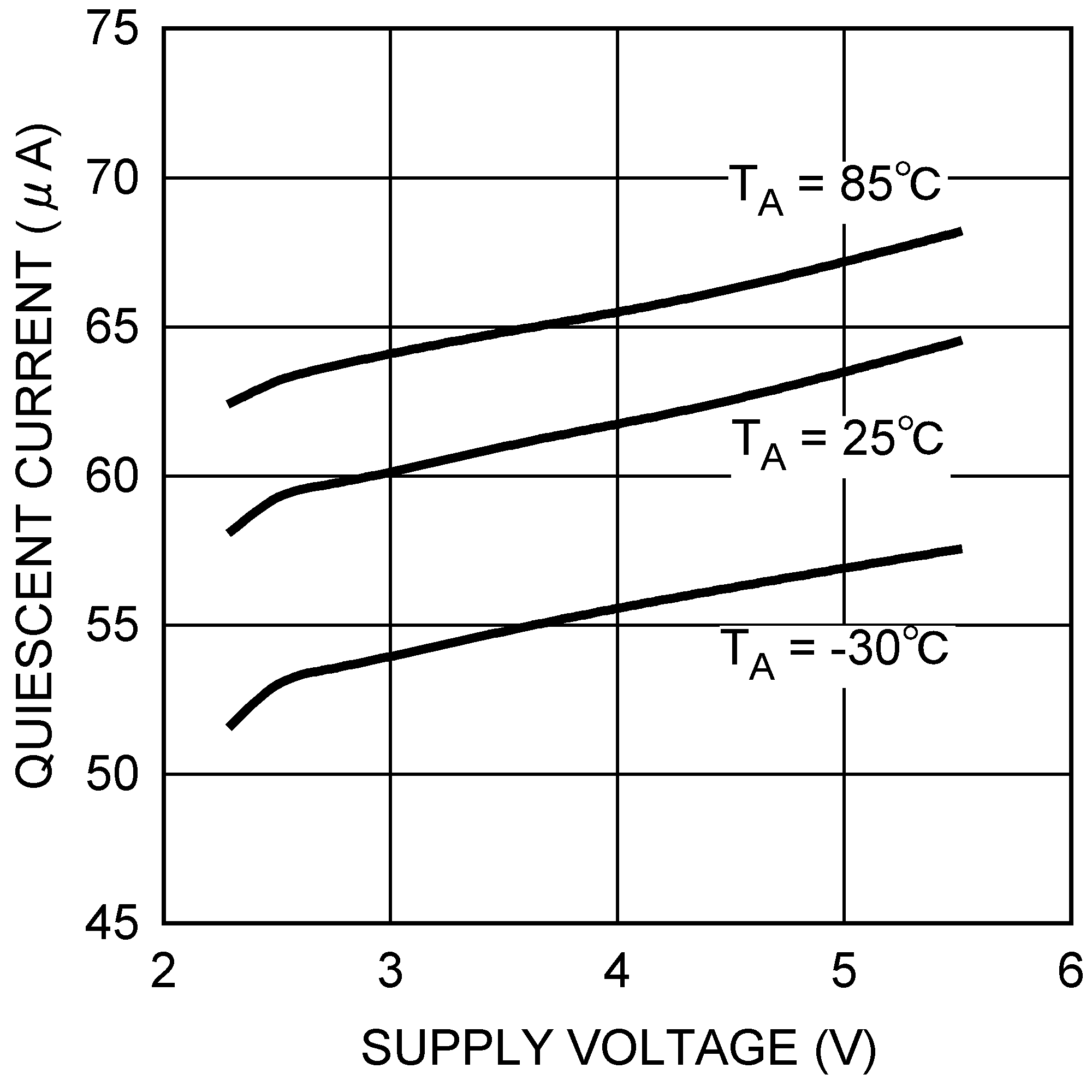
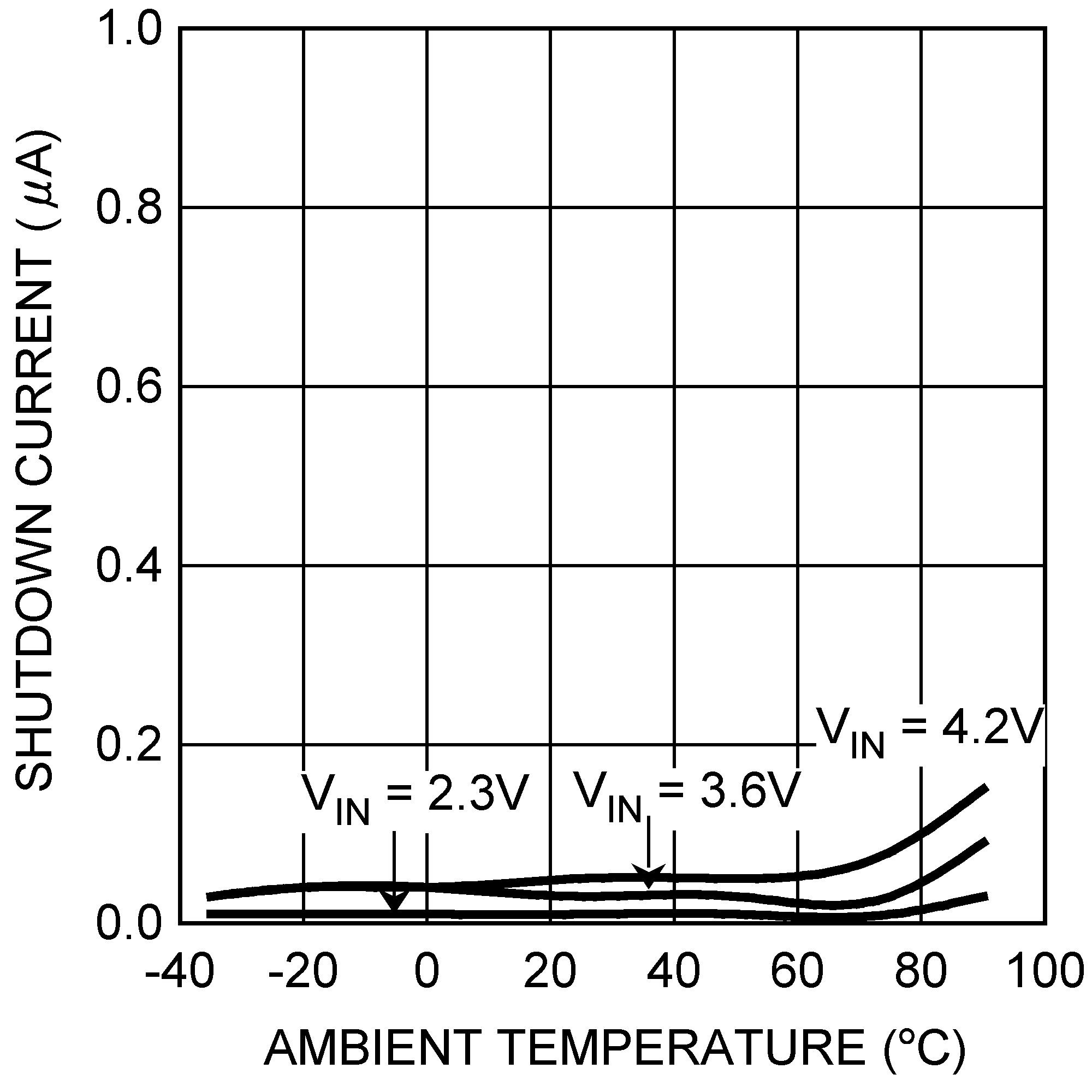
| VOUT = 1.8 V |
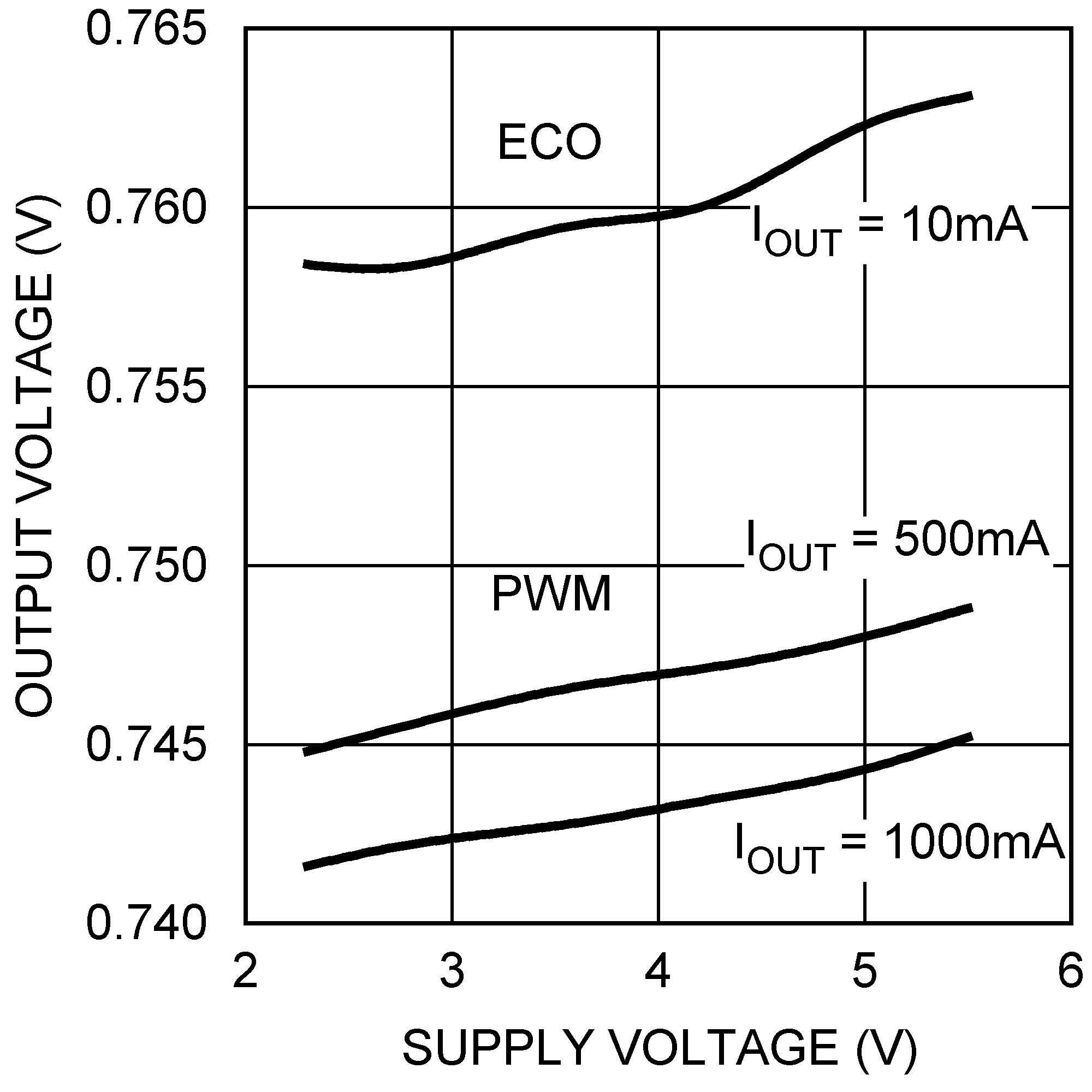
| VOUT = 0.75 V |
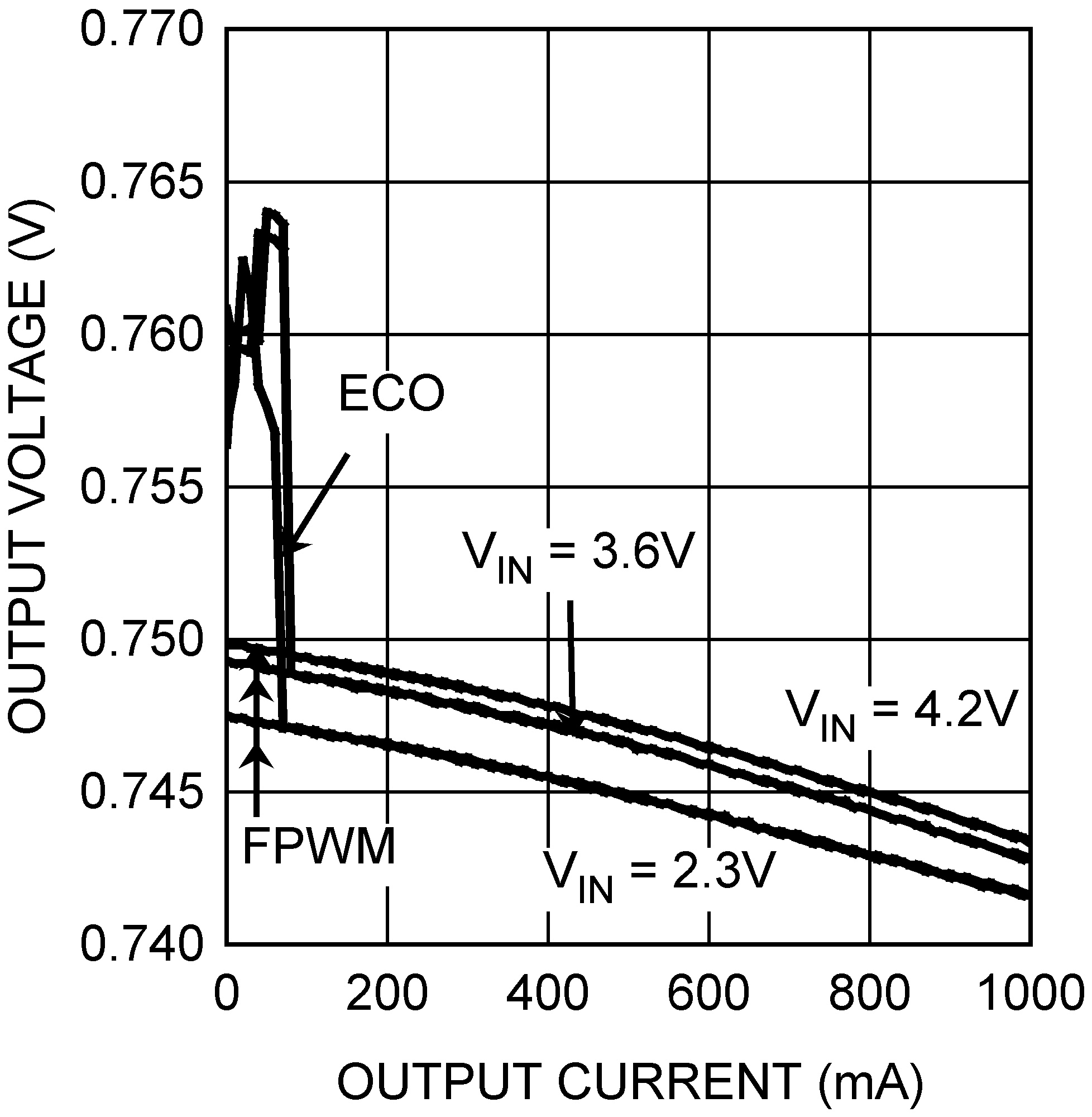
| VOUT = 0.75 V |
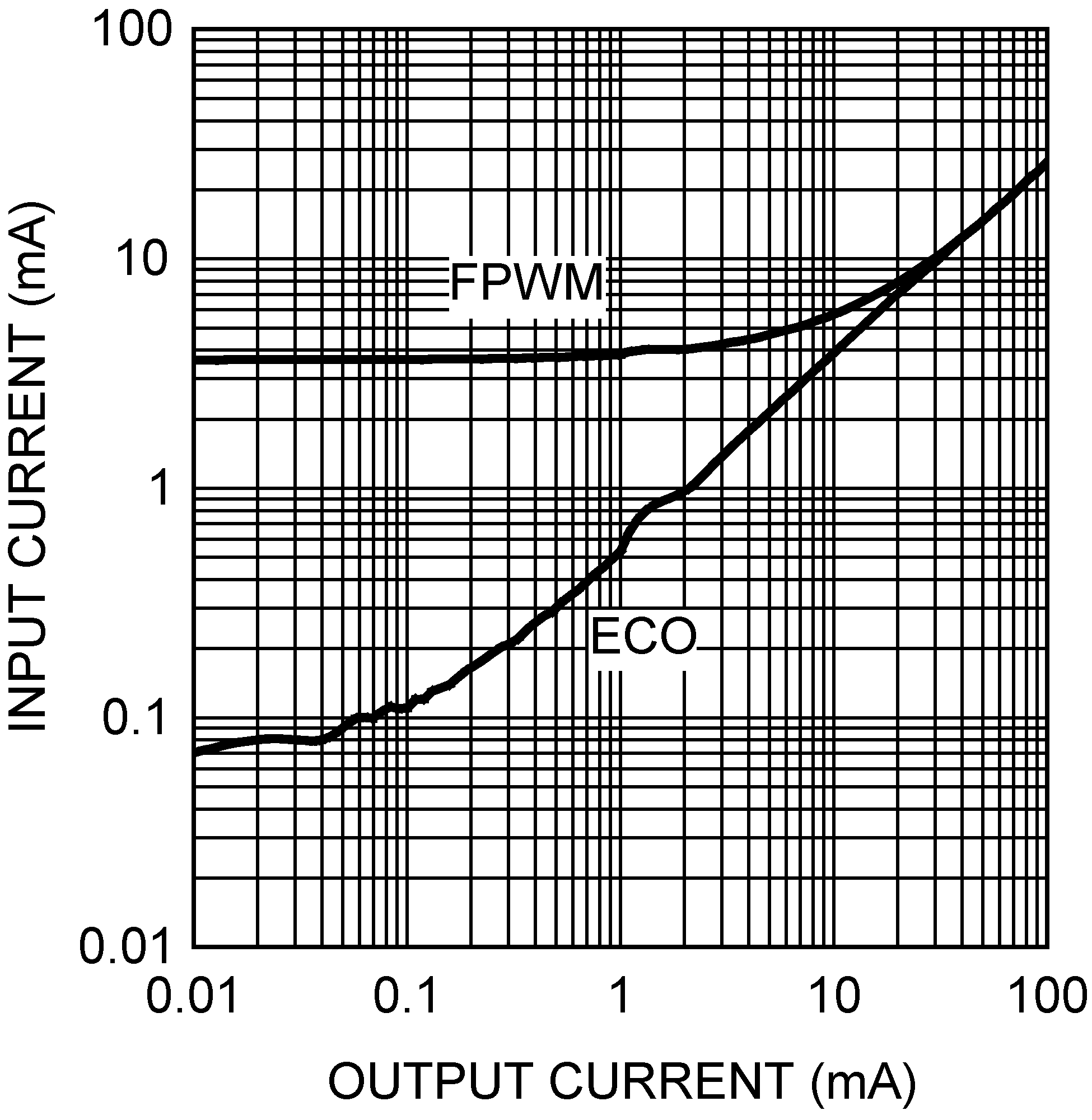
| VOUT = 0.75 V |
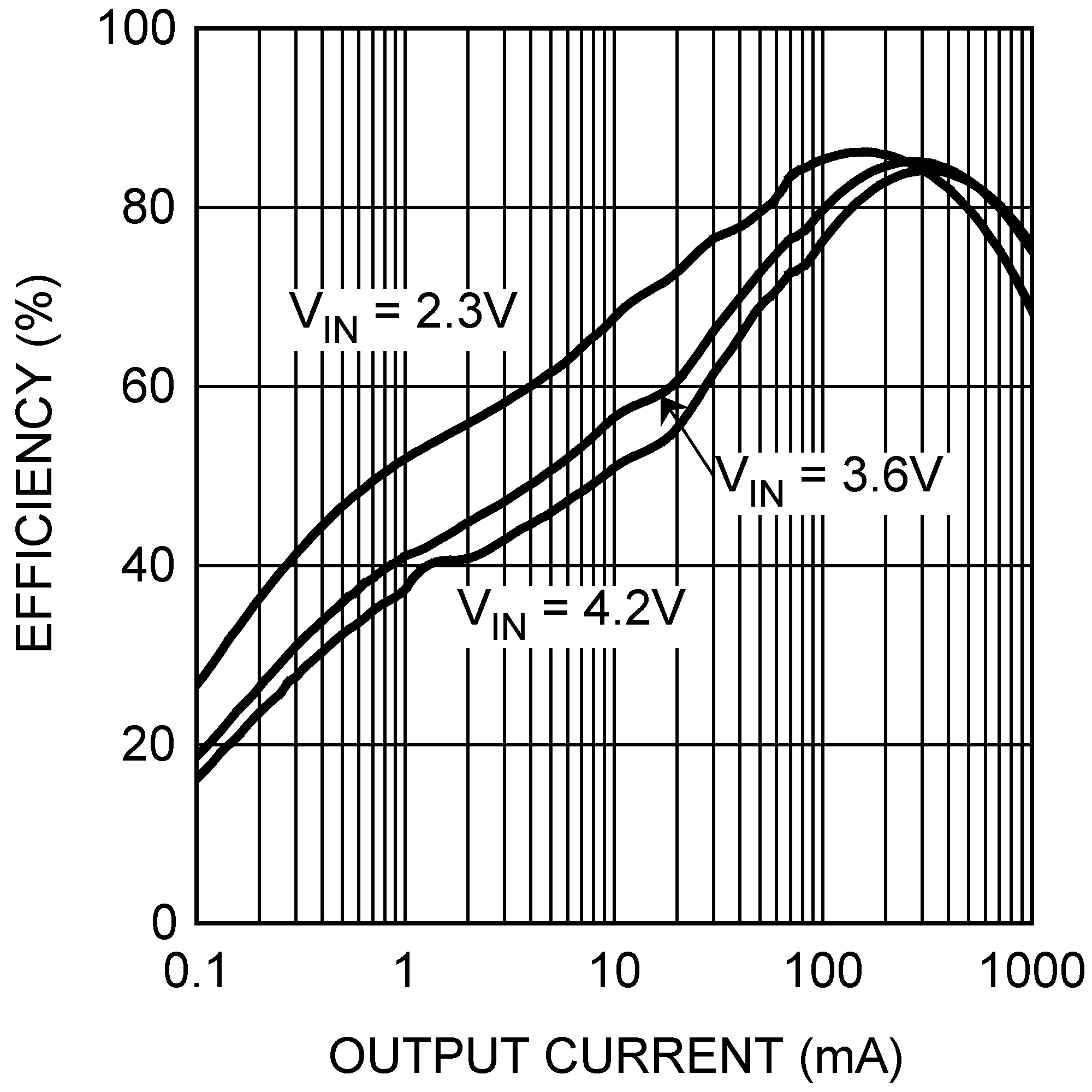
| VOUT = 0.75 V |
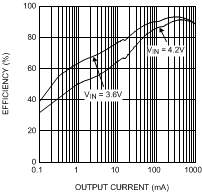
| VOUT = 2.5 V |
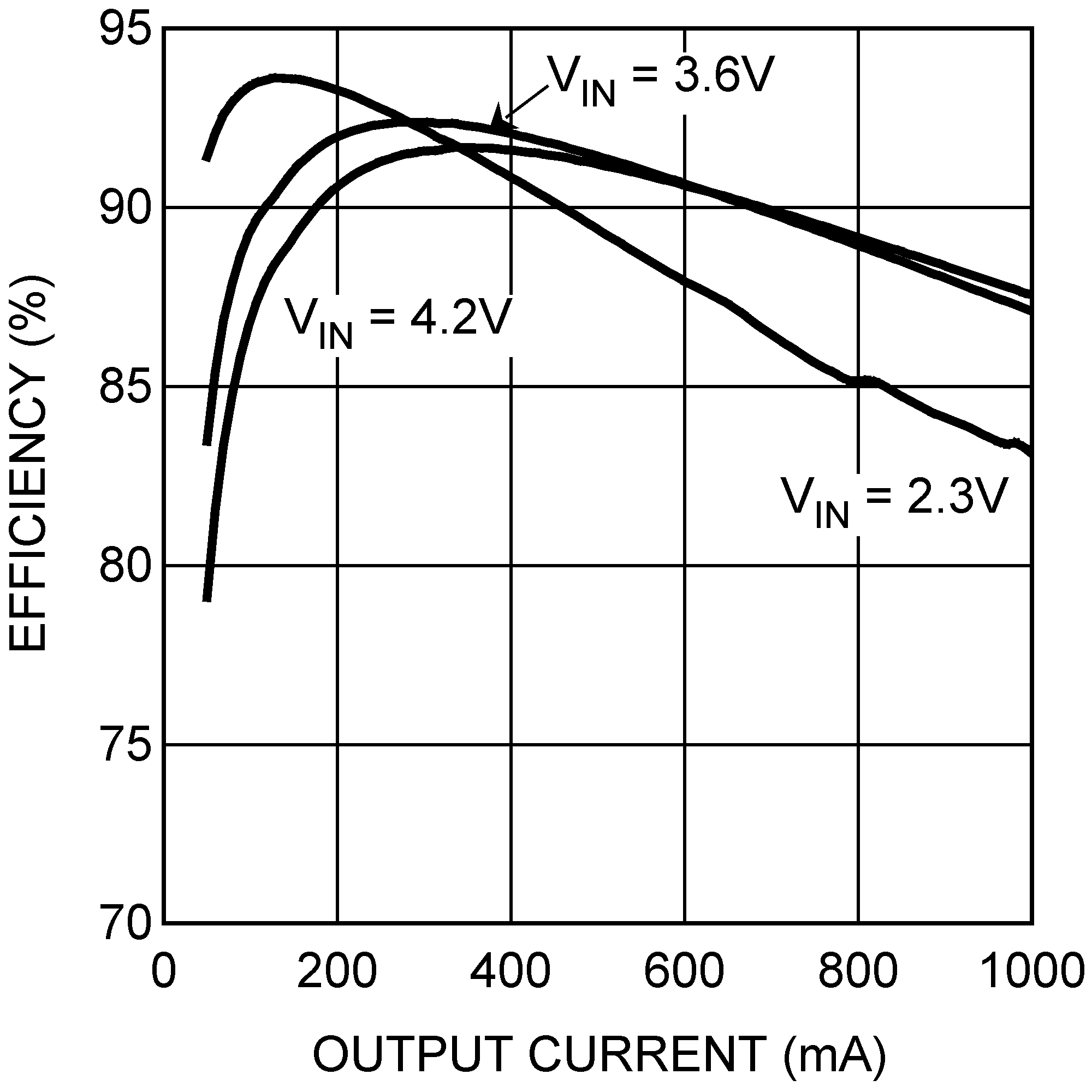
| VOUT = 1.8 V |
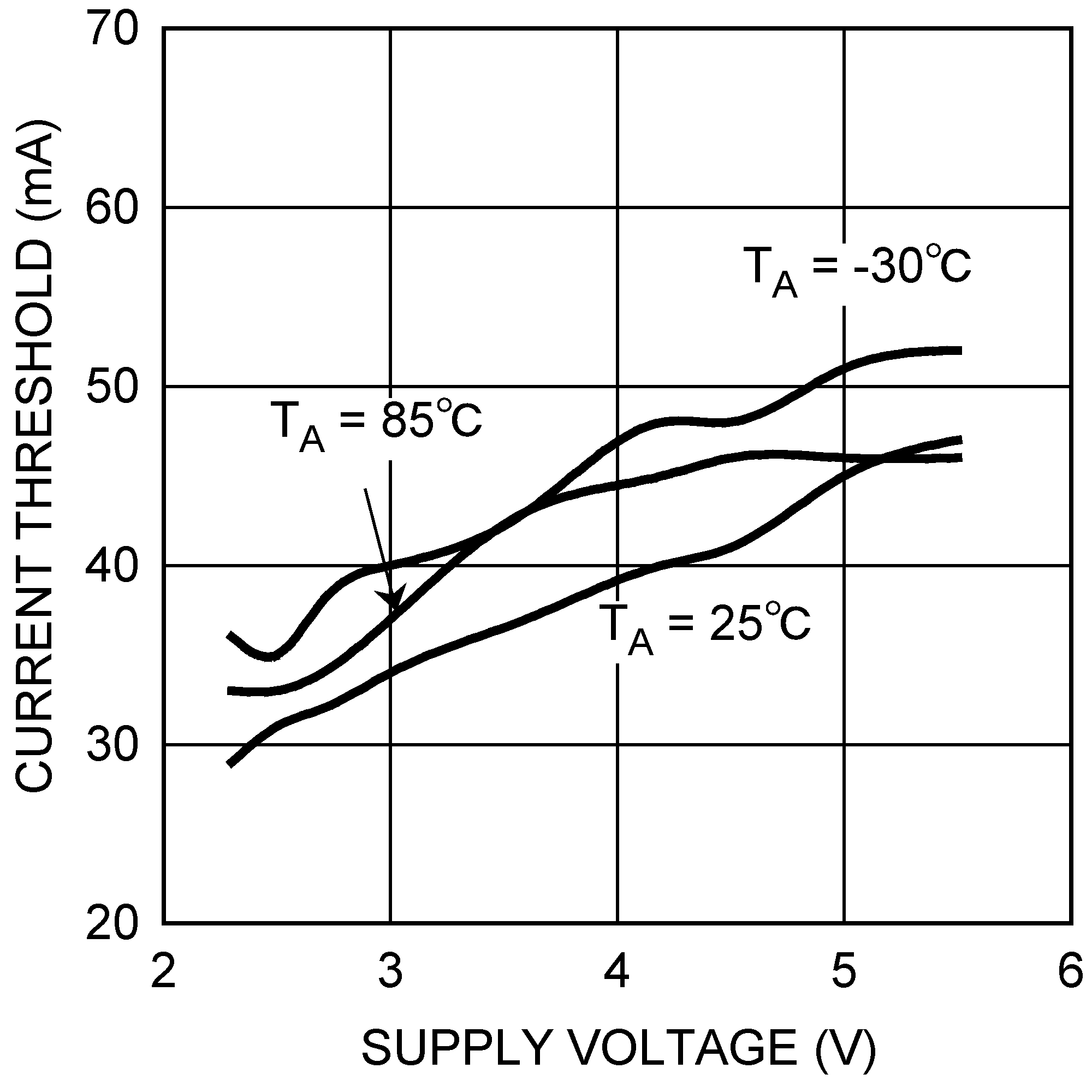
| VOUT = 0.75 V |
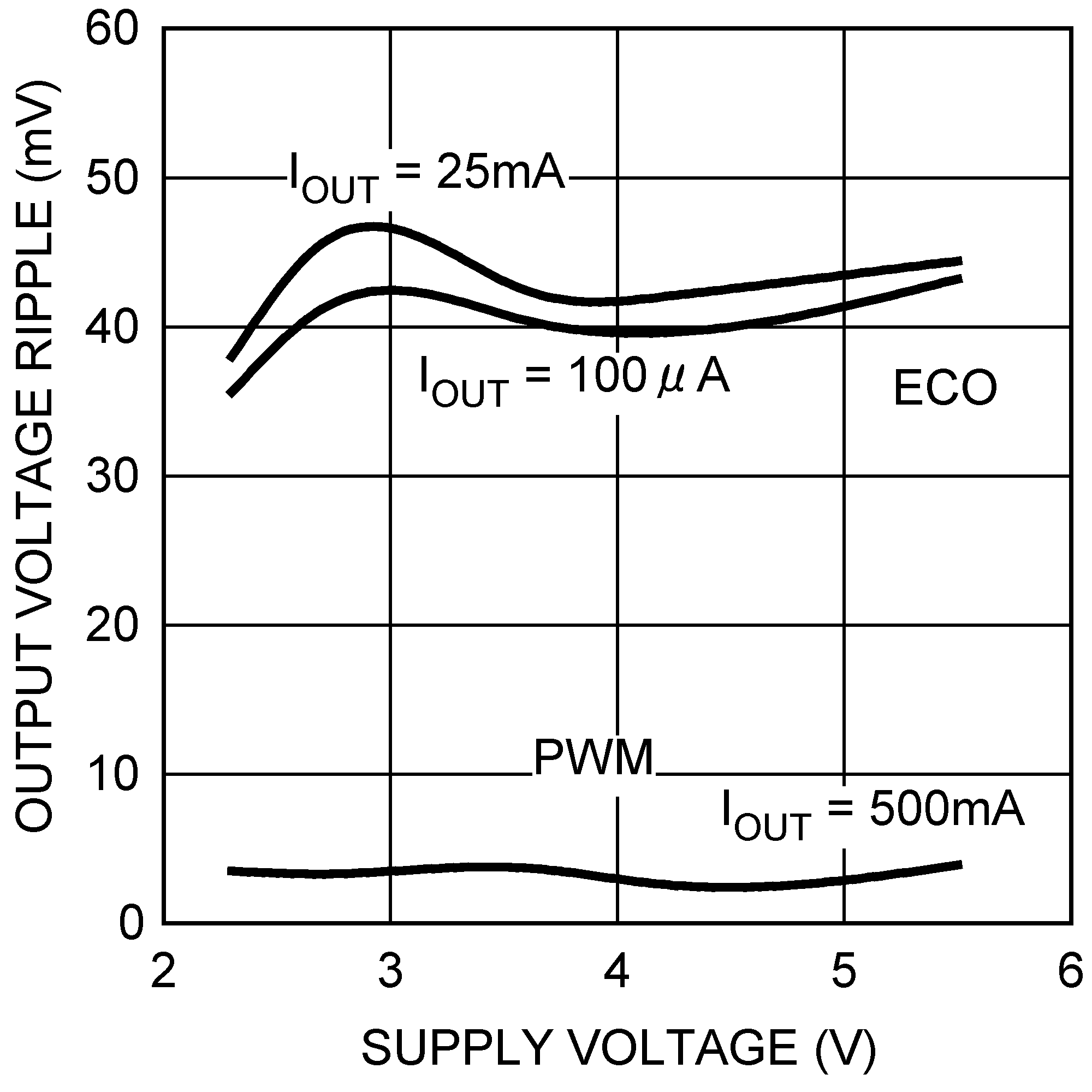
| VOUT = 0.75 V |
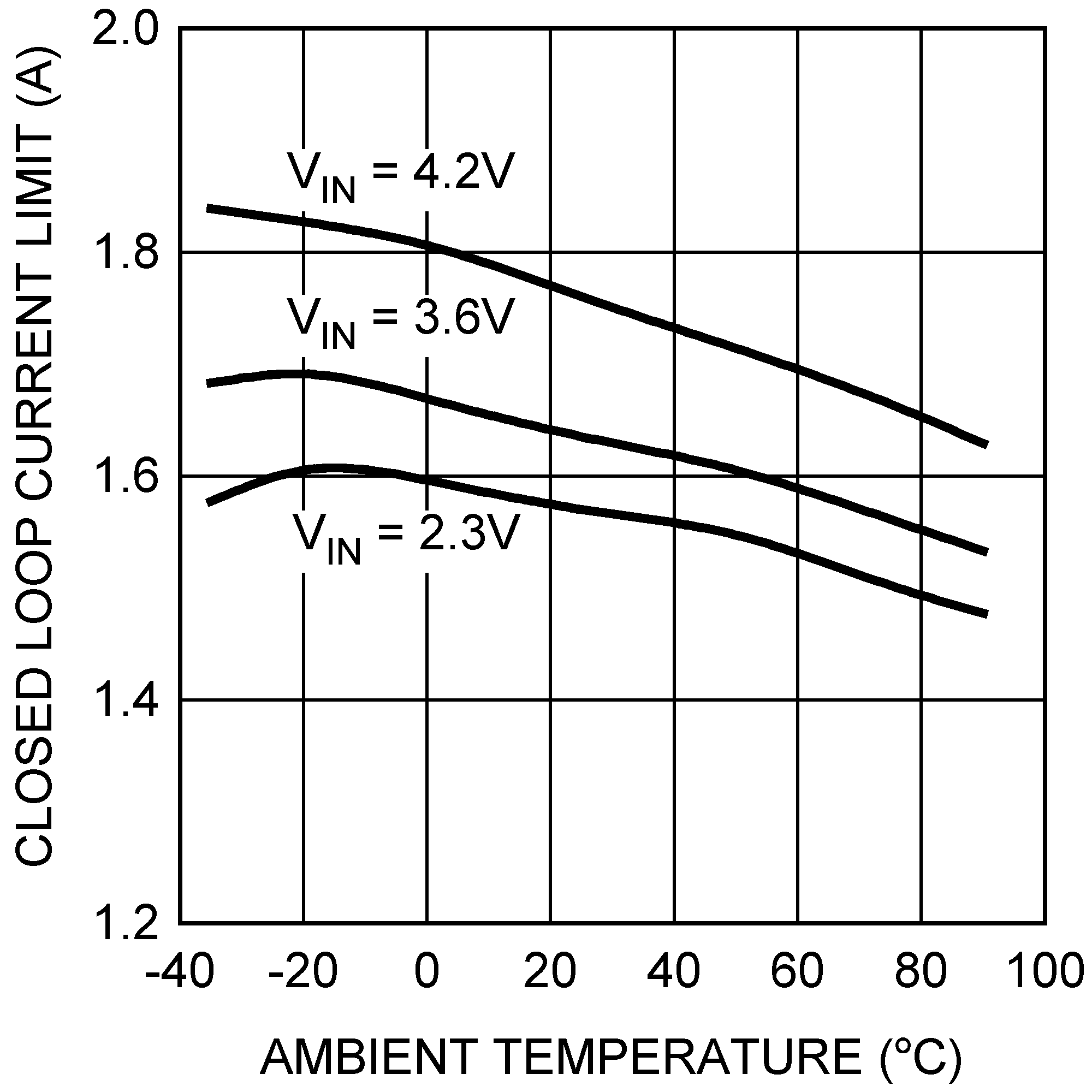
| VOUT = 0.75 V |
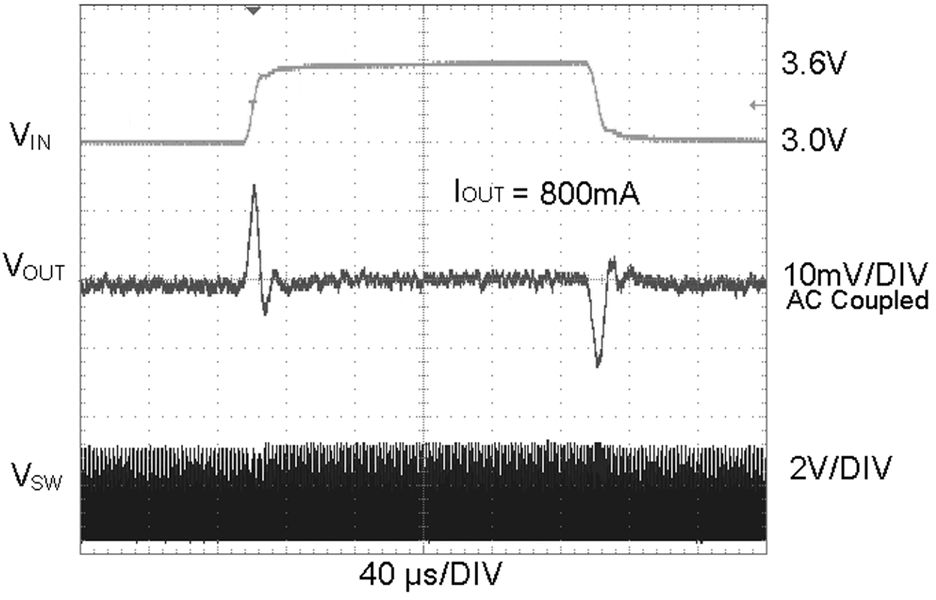
| VOUT = 0.75 V |
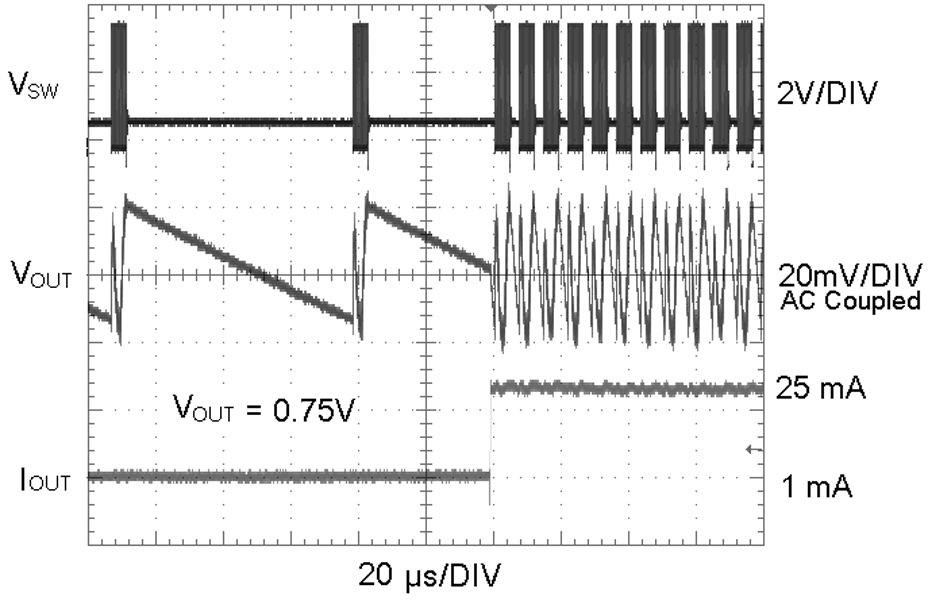
| VOUT = 0.75 V | ECO Mode 1 mA to 25 mA | |
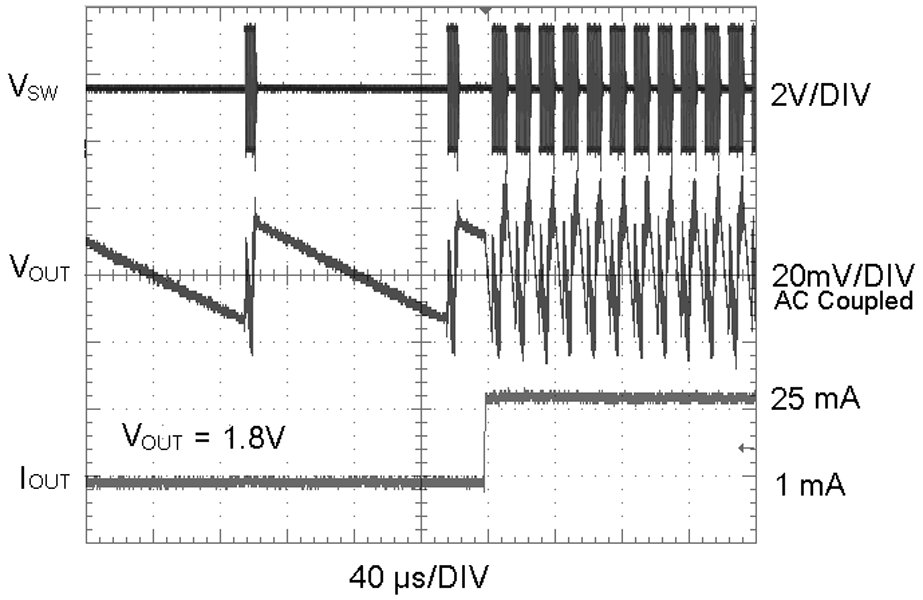
| VOUT = 1.8 V | ECO Mode 1 mA to 25 mA | |
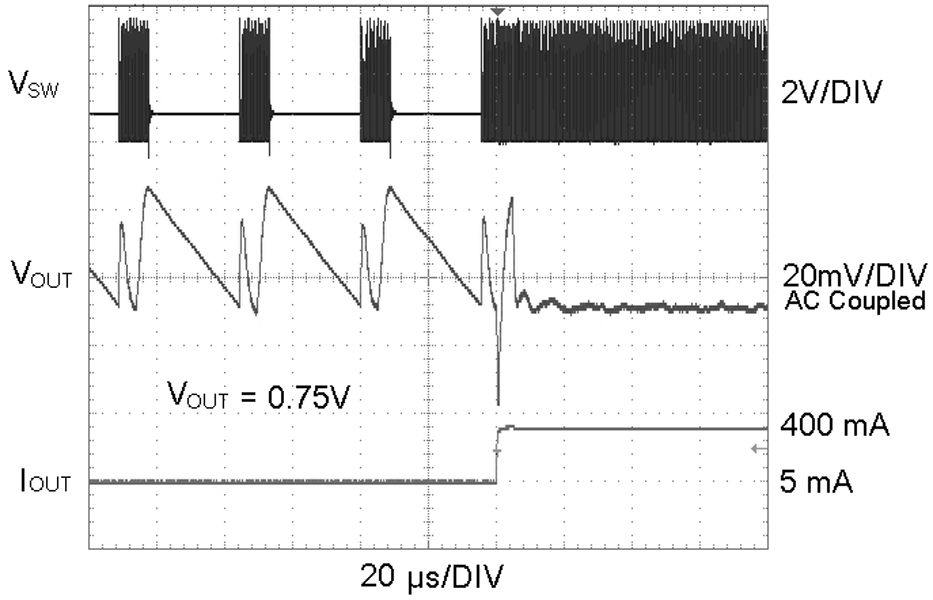
| VOUT = 0.75 V | ECO Mode to PWM Mode | |
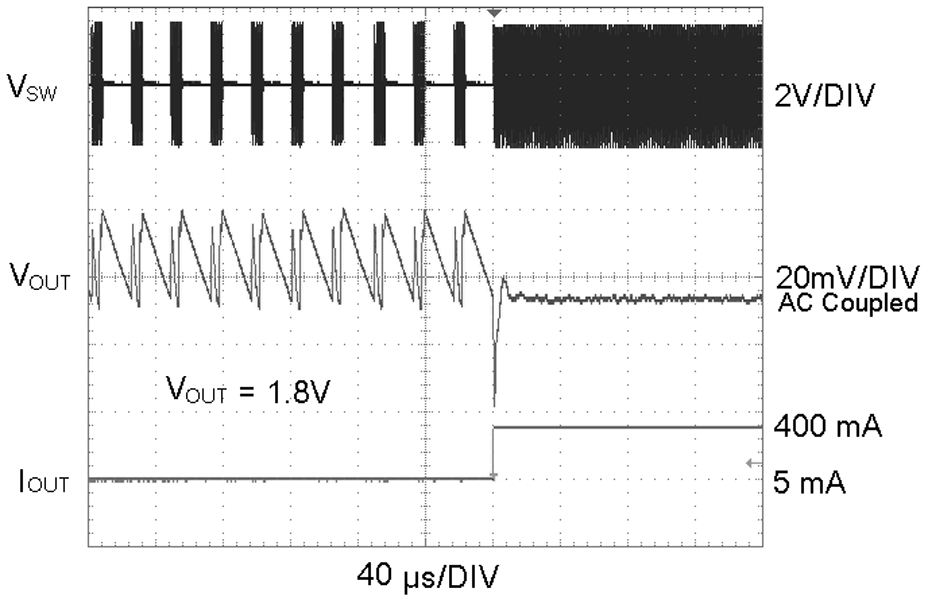
| VOUT = 1.8 V | ECO Mode to PWM Mode | |
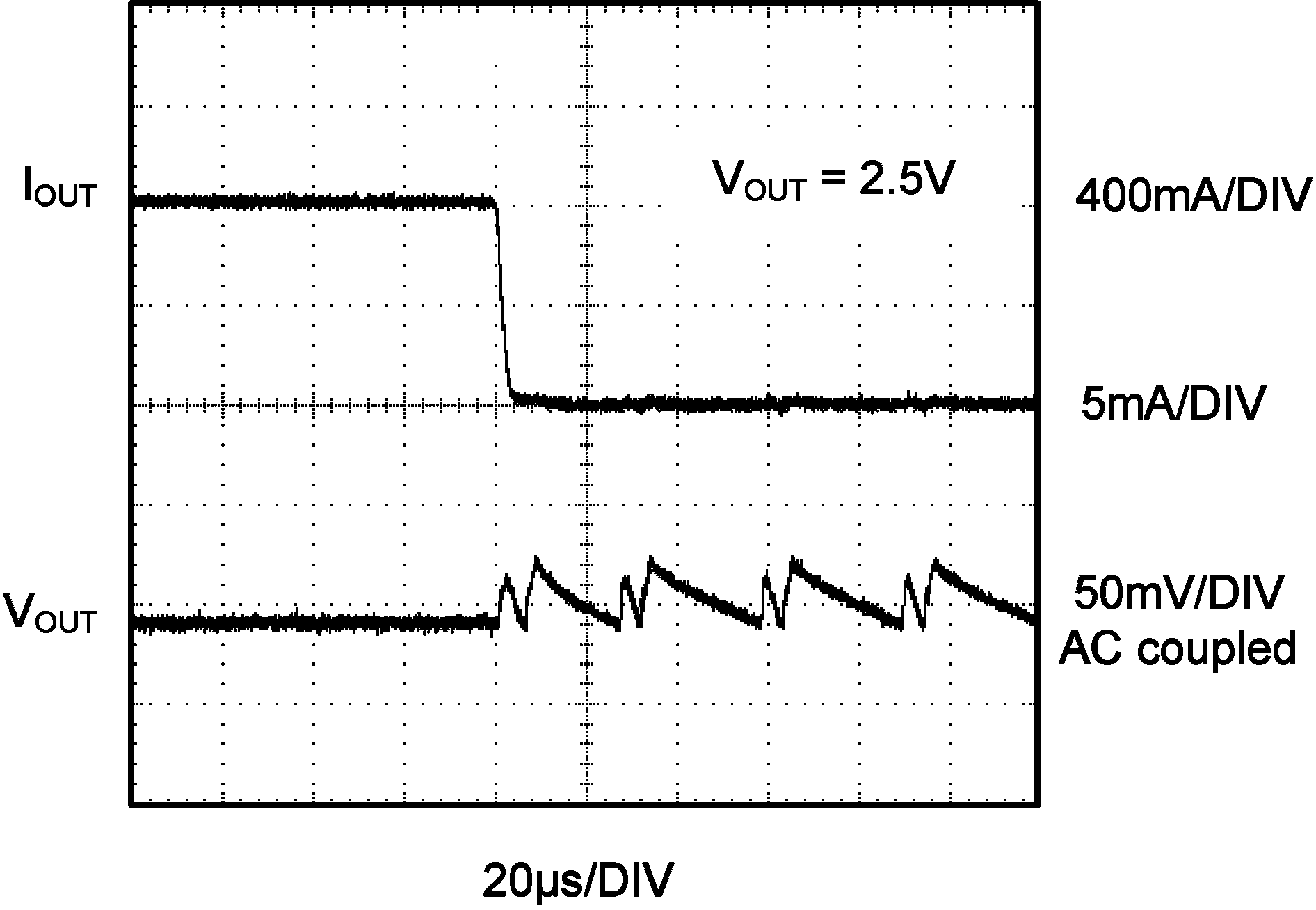
| VOUT = 2.5 V | ECO Mode to PWM Mode | |
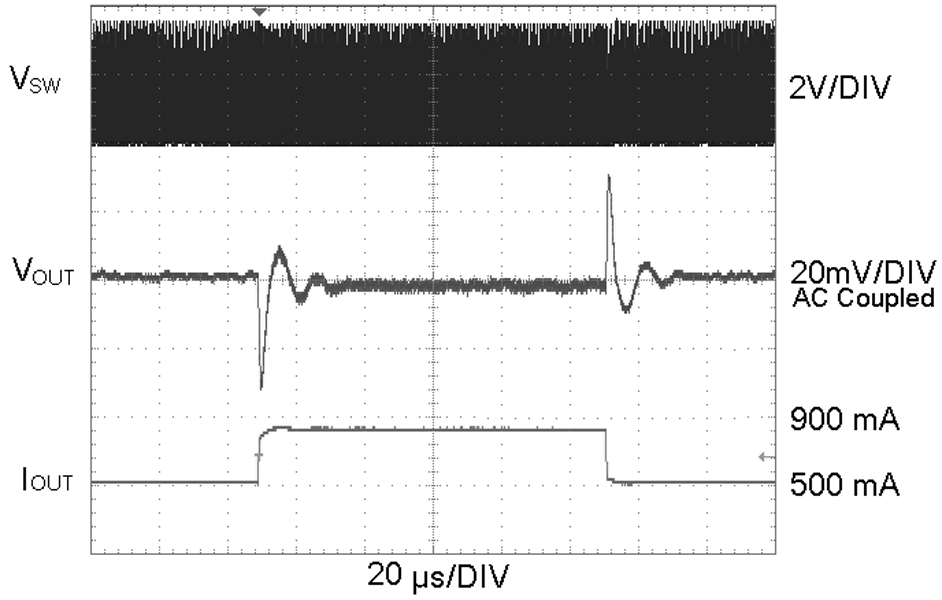
| VOUT = 0.75 V | PWM Mode |
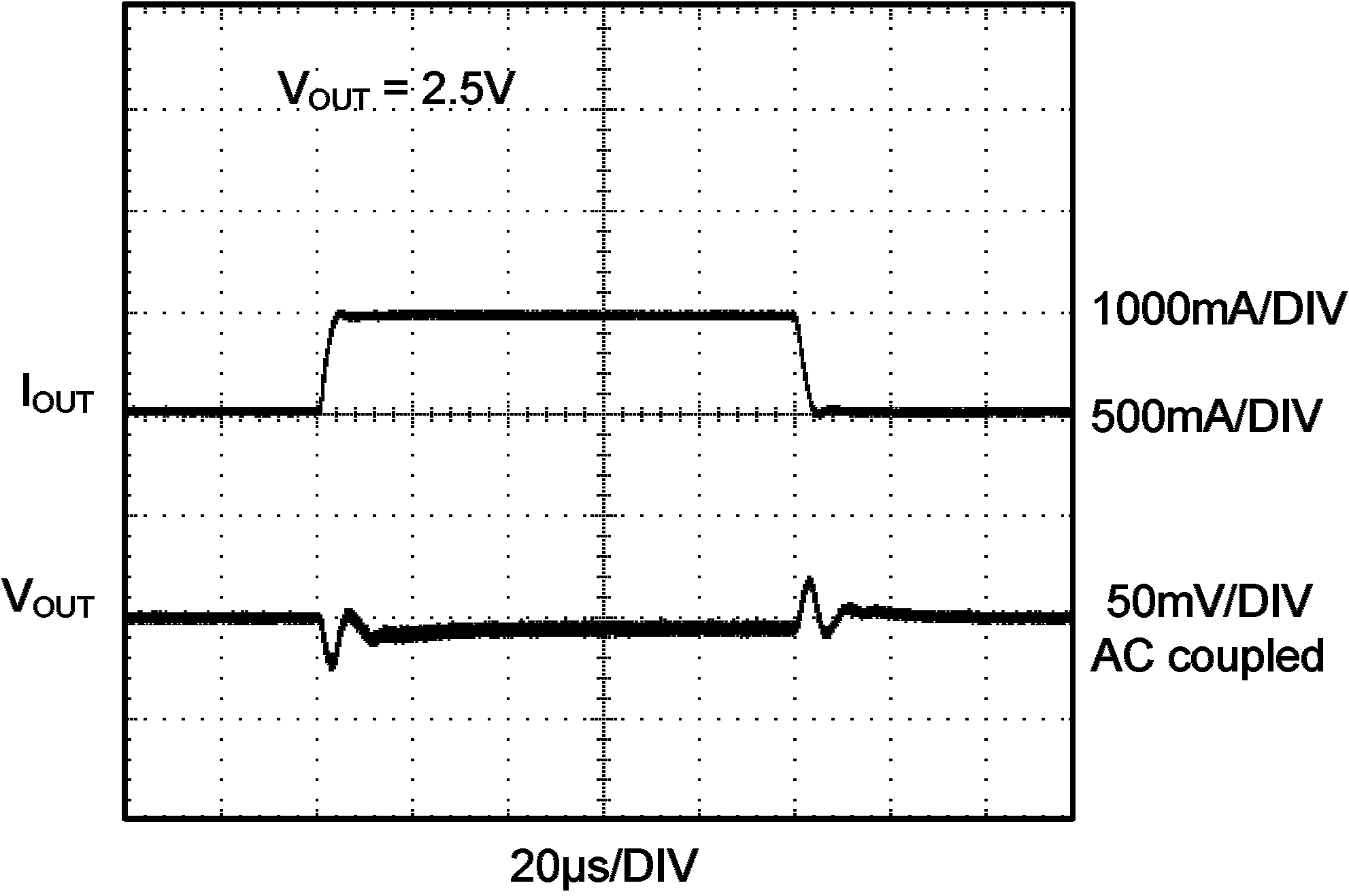
| VOUT = 2.5 V | PWM Mode | |
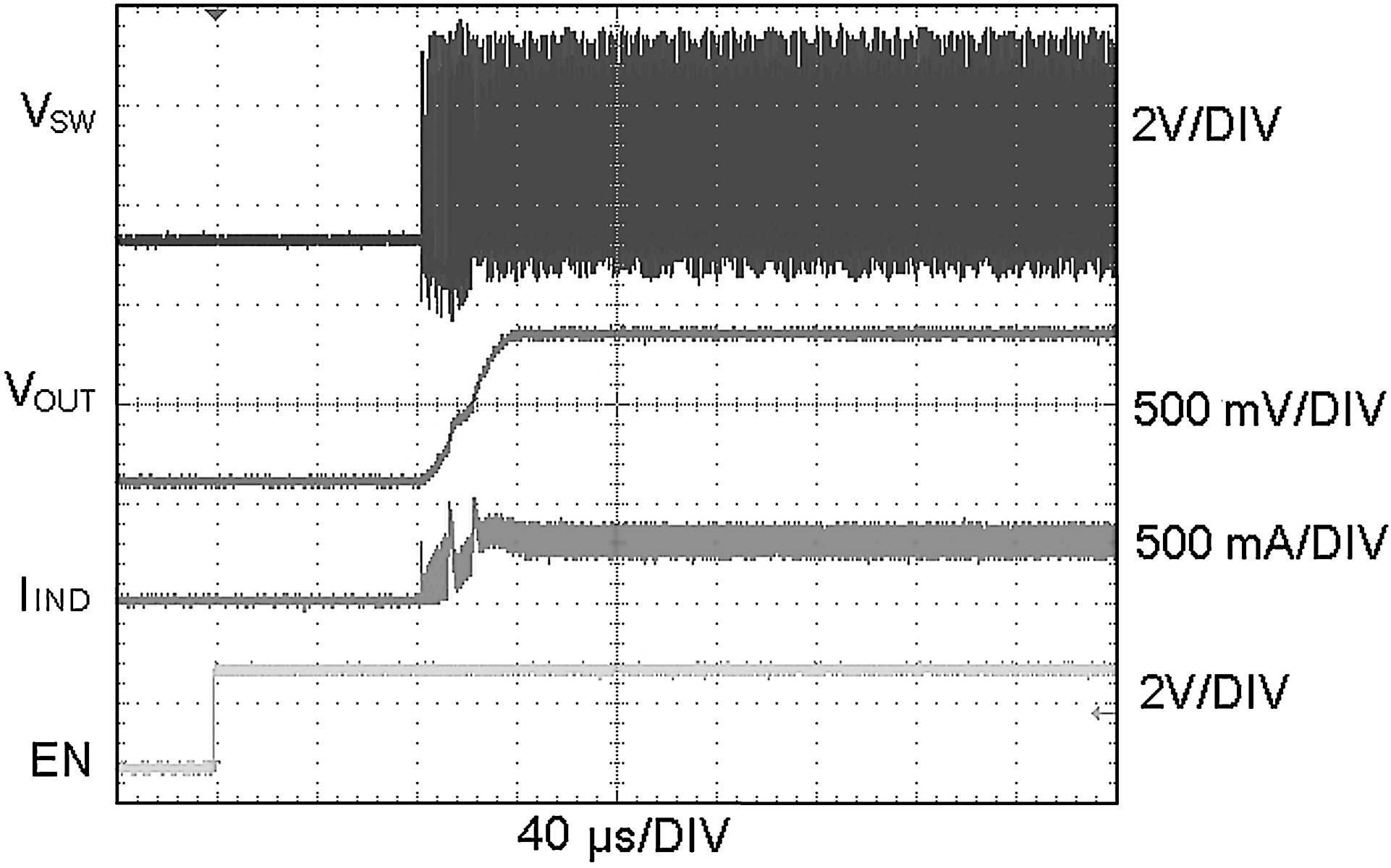
| VOUT = 0.75 V | ROUT = 2.5 Ω |
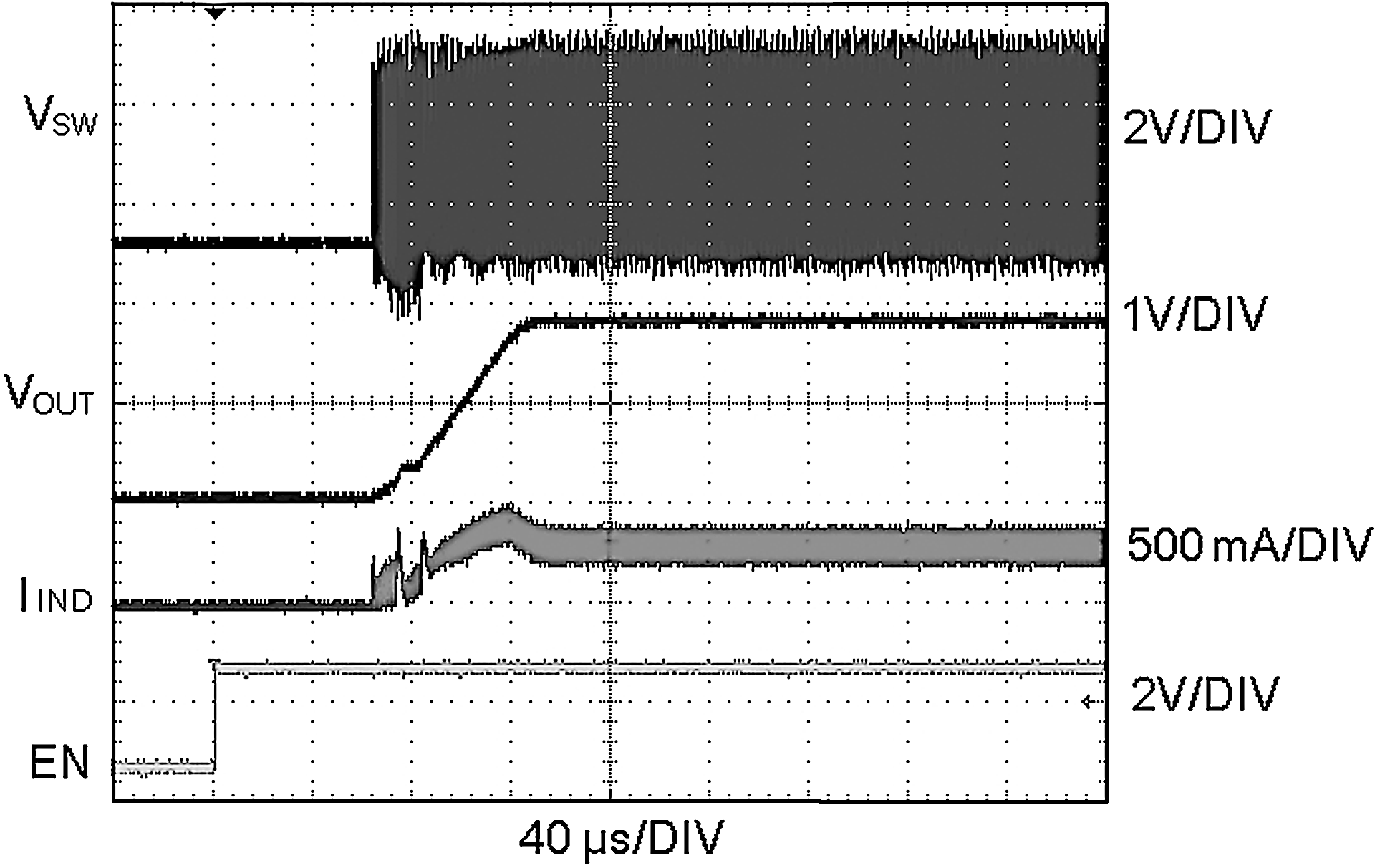
| VOUT = 1.8 V | ROUT = 6 Ω |
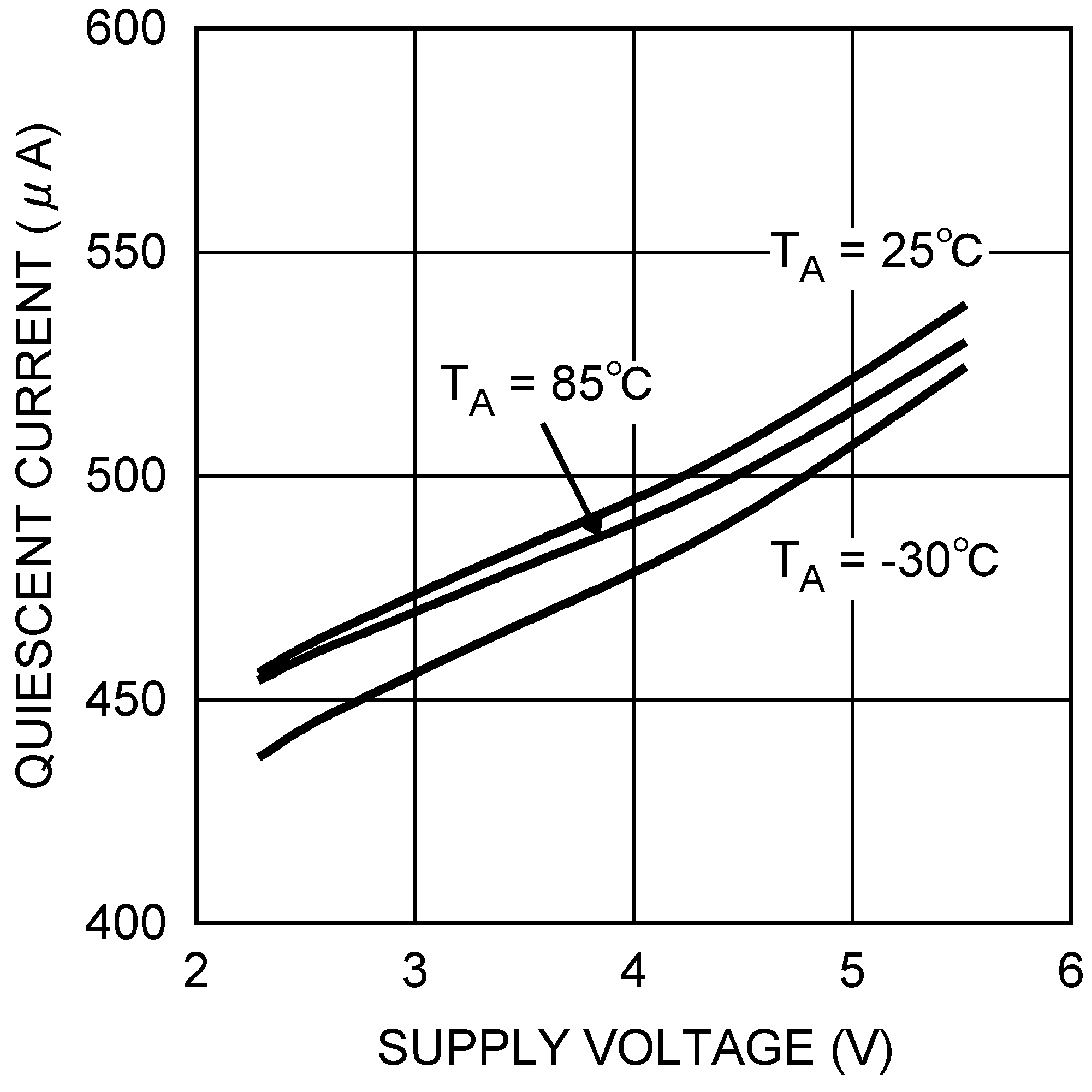
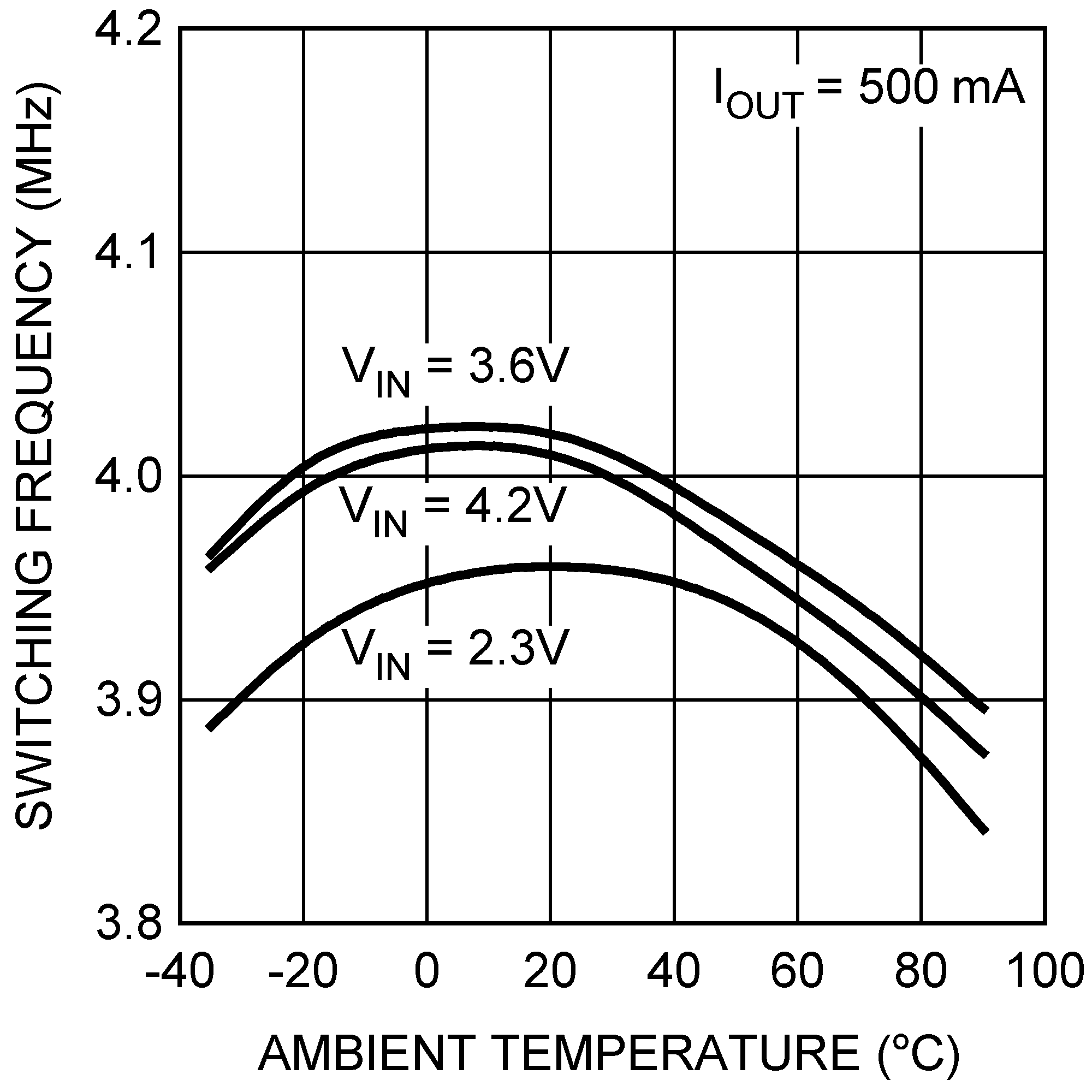
| VOUT = 1.8 V |
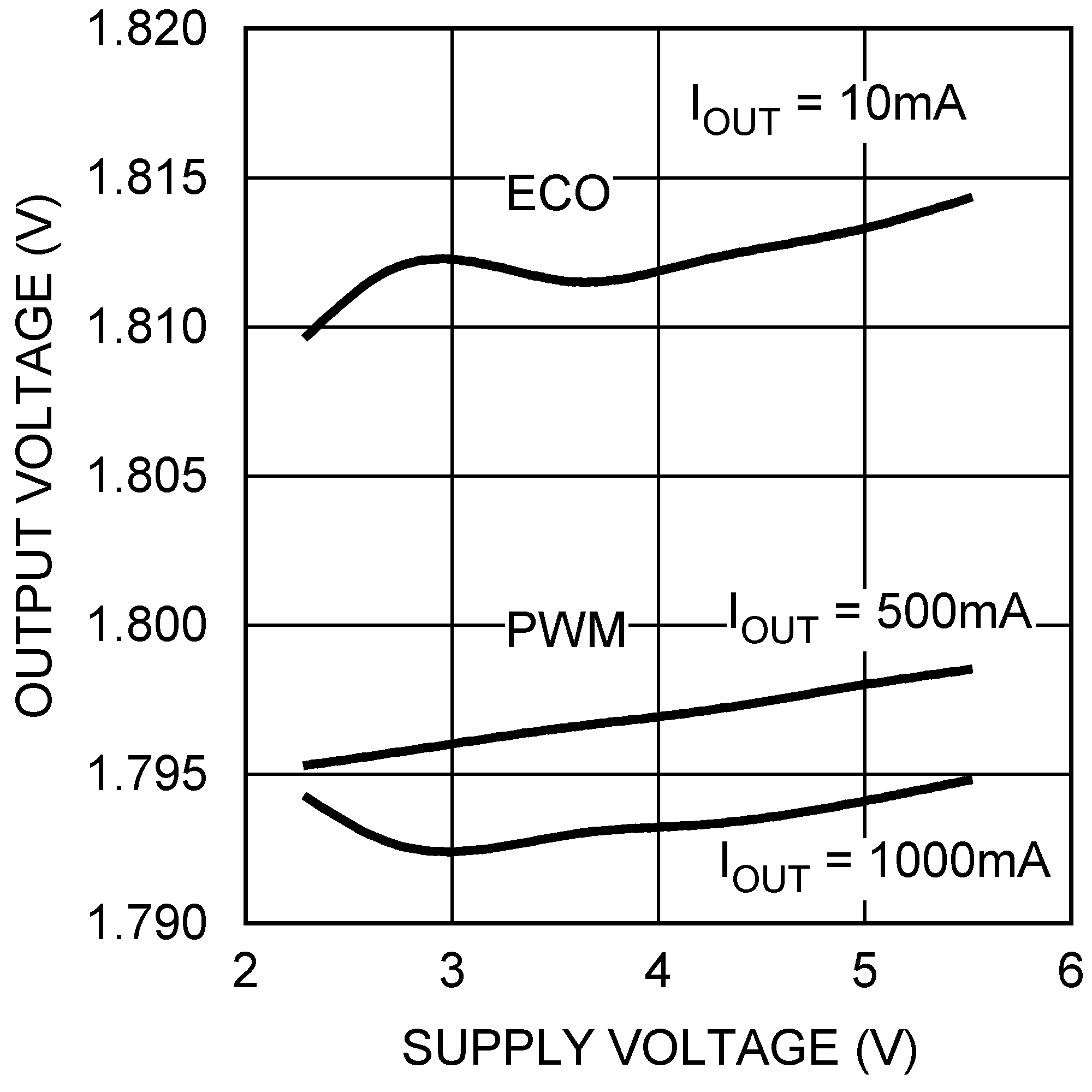
| VOUT = 1.8 V |
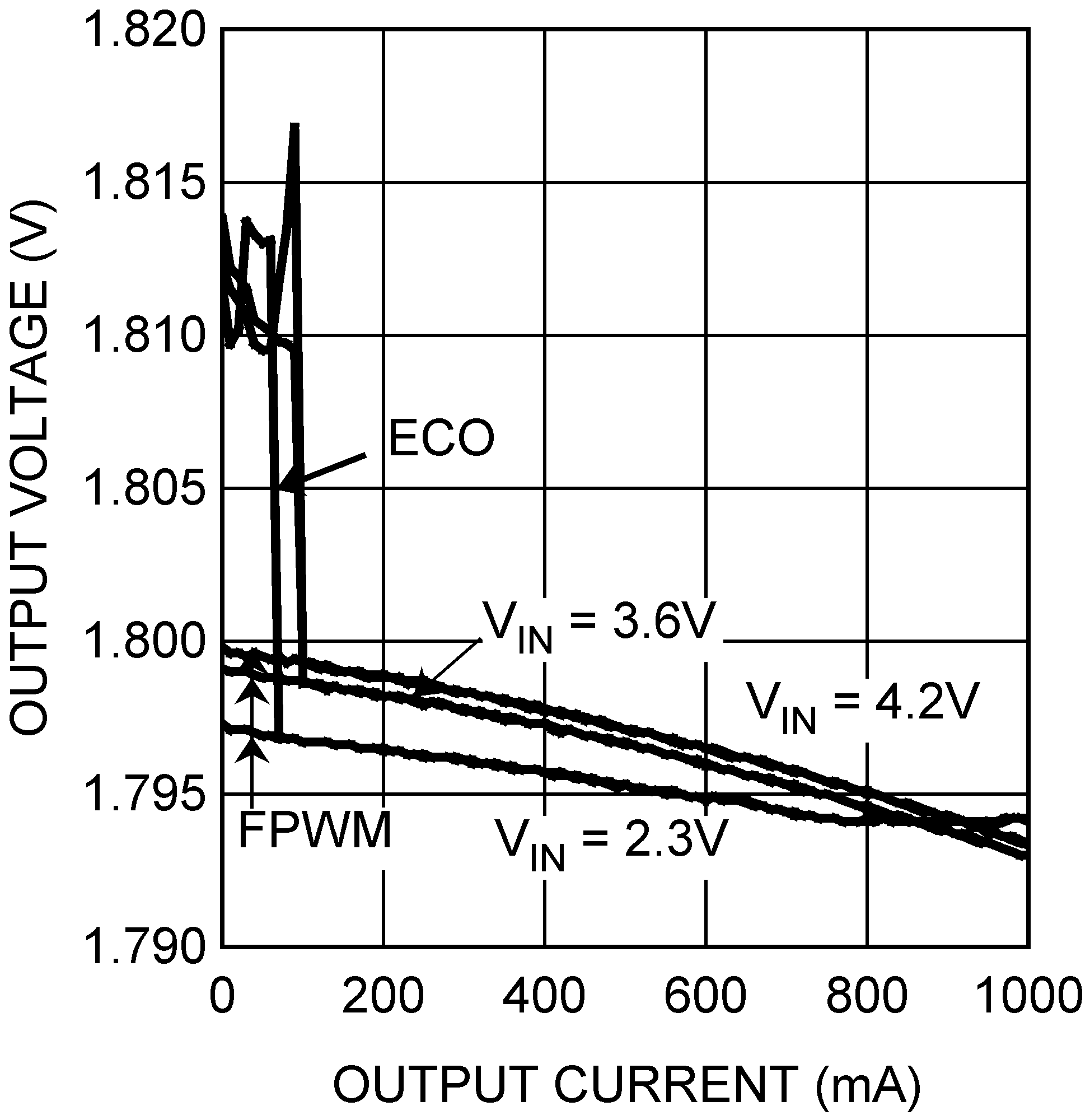
| VOUT = 1.8 V |
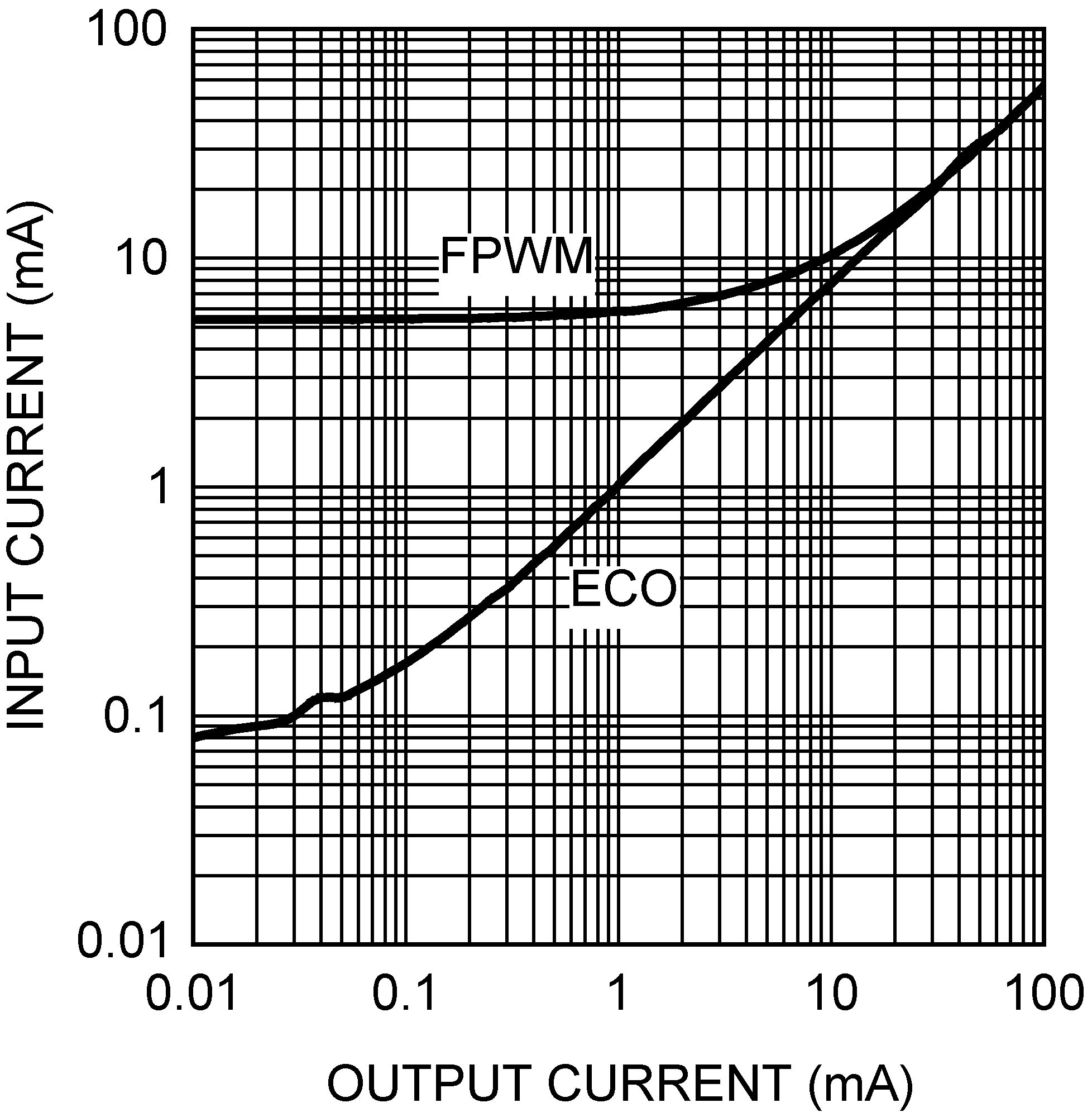
| VOUT = 1.8 V |
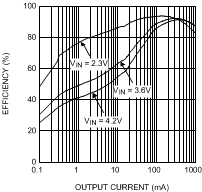
| VOUT = 1.8 V |
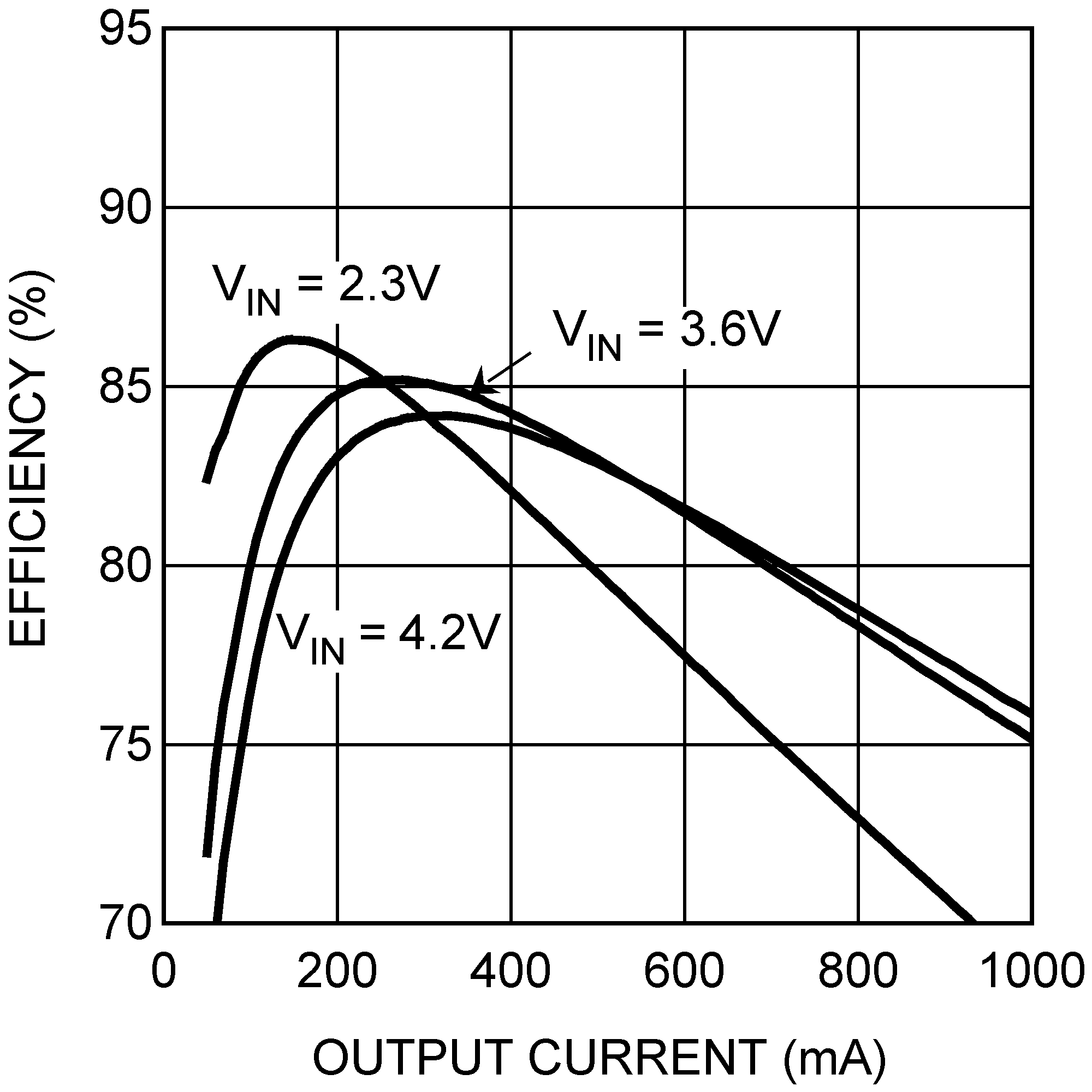
| VOUT = 0.75 V |
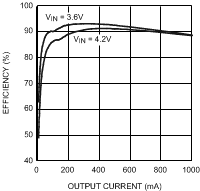
| VOUT = 2.5 V |
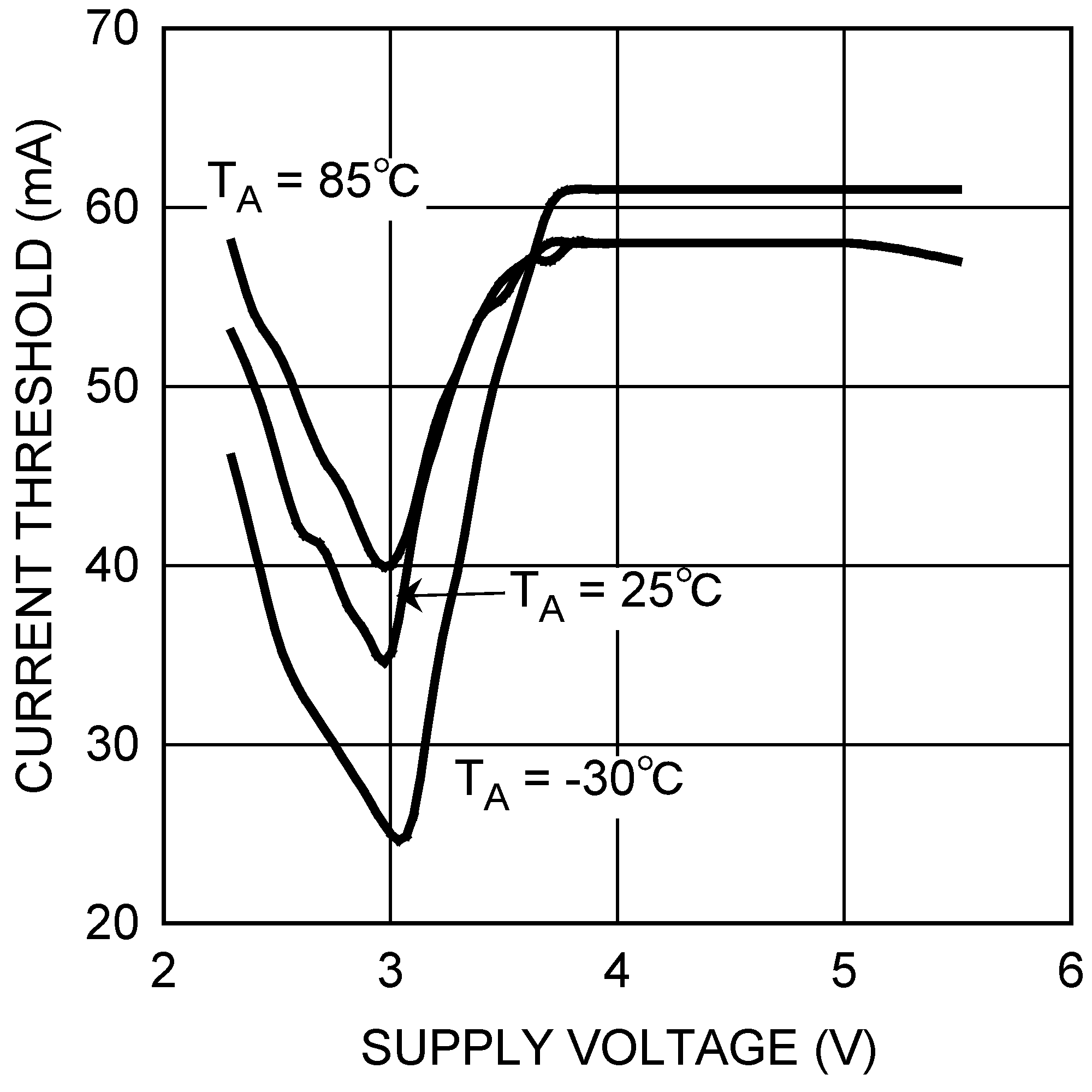
| VOUT = 1.8 V |
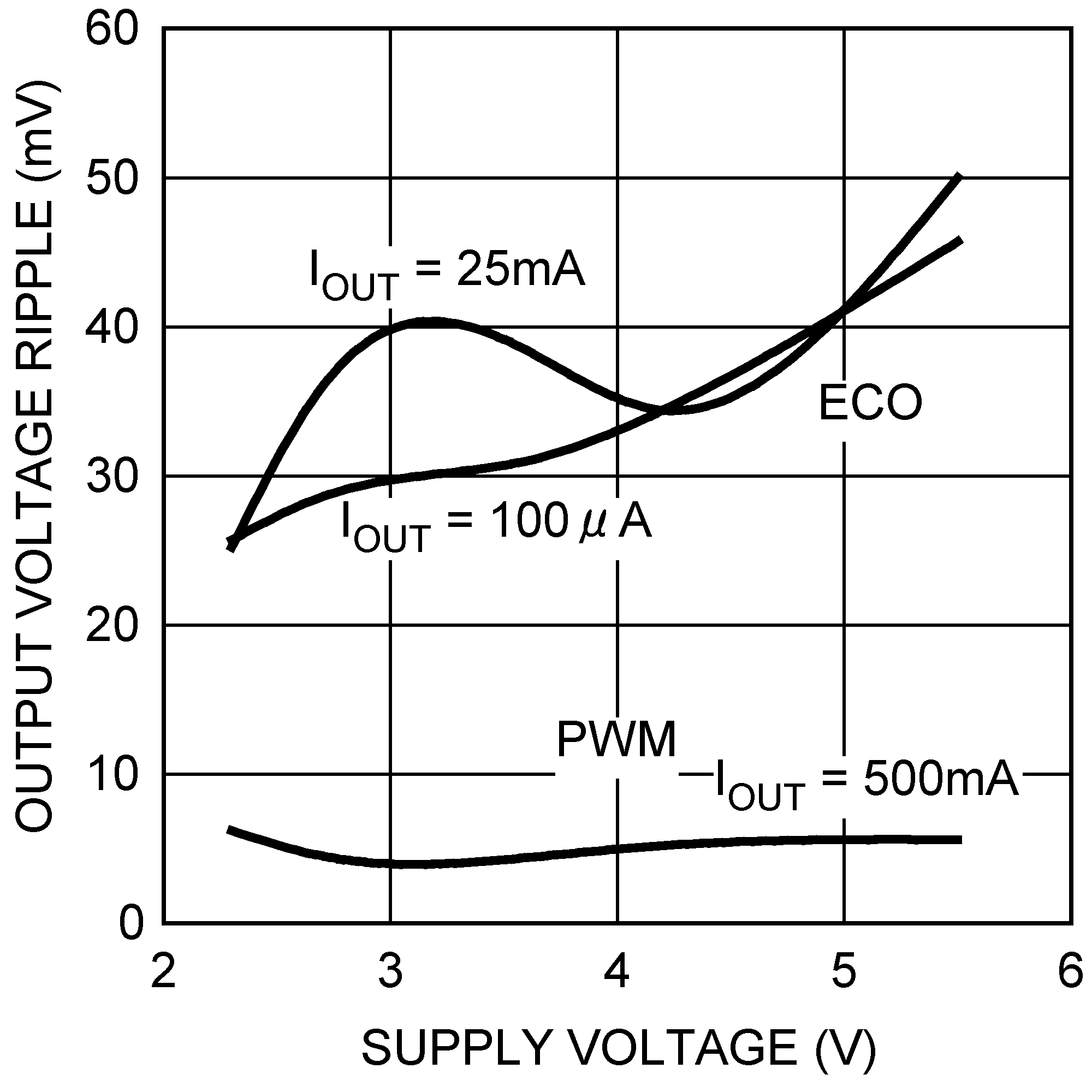
| VOUT = 1.8 V |
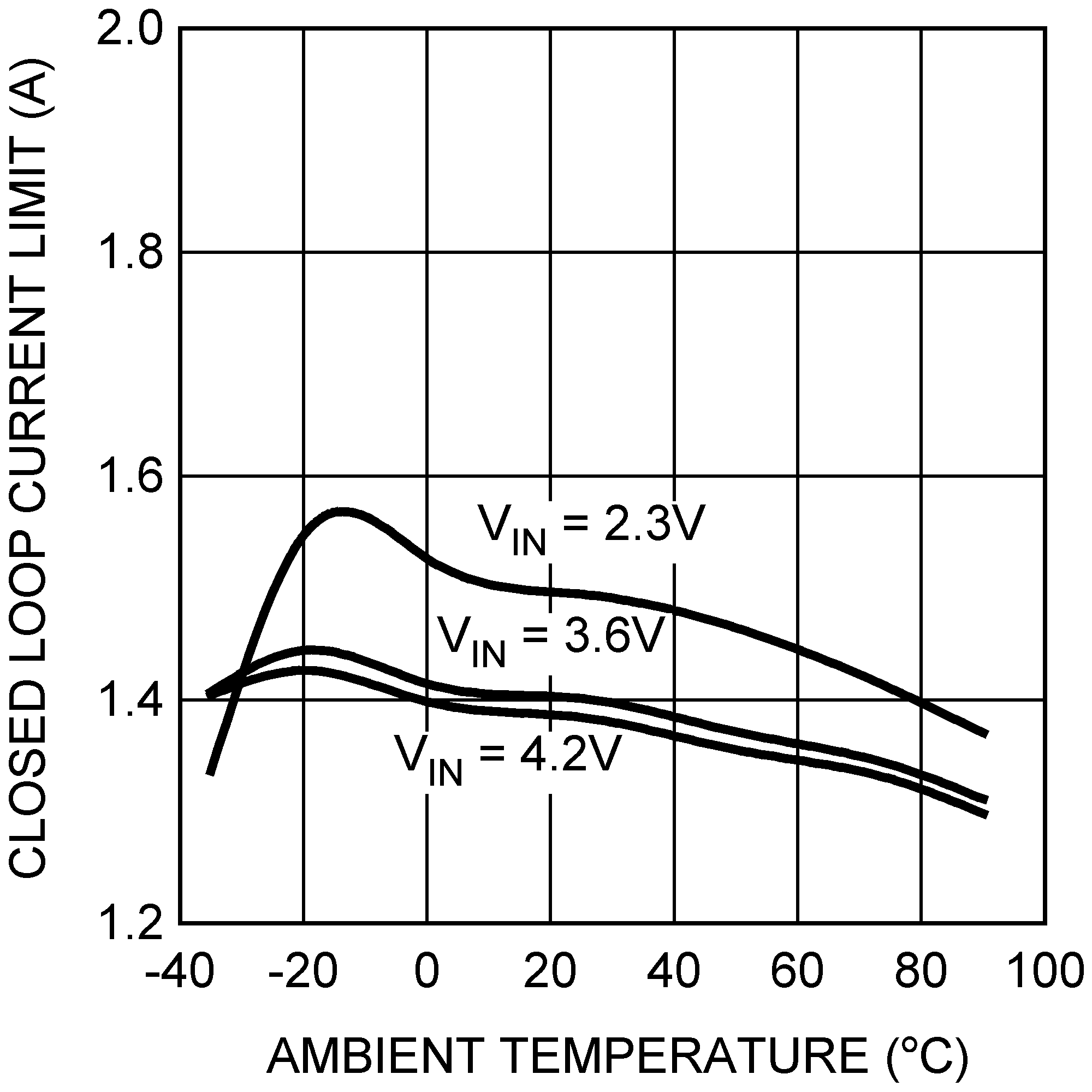
| VOUT = 1.8 V |
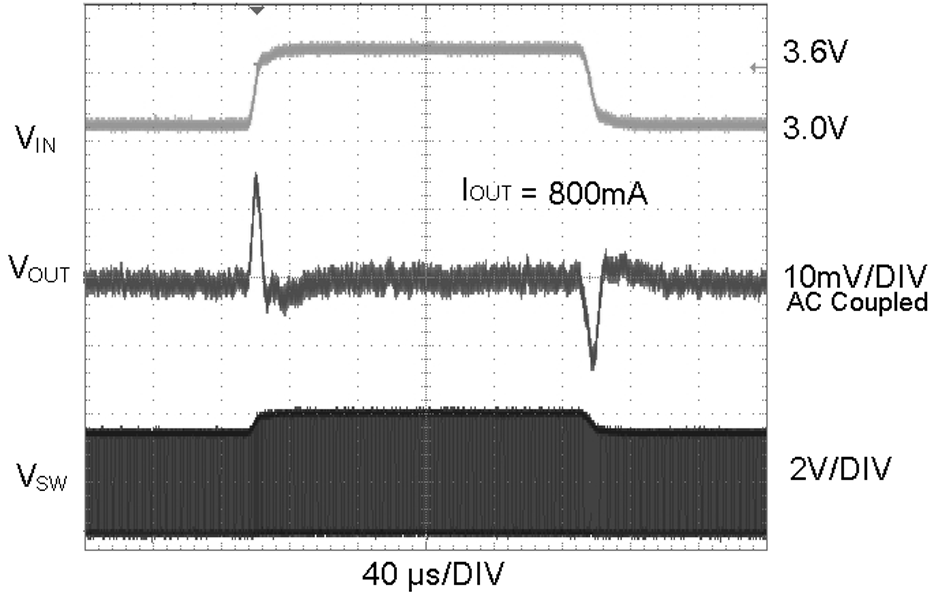
| VOUT = 1.8 V |
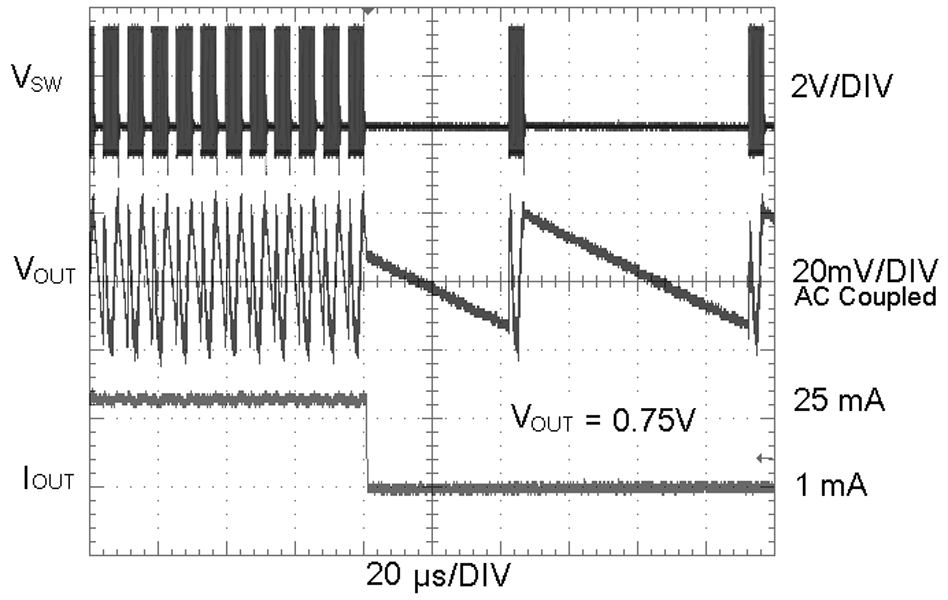
| VOUT = 0.75 V | ECO Mode 25 mA to 1 mA | |
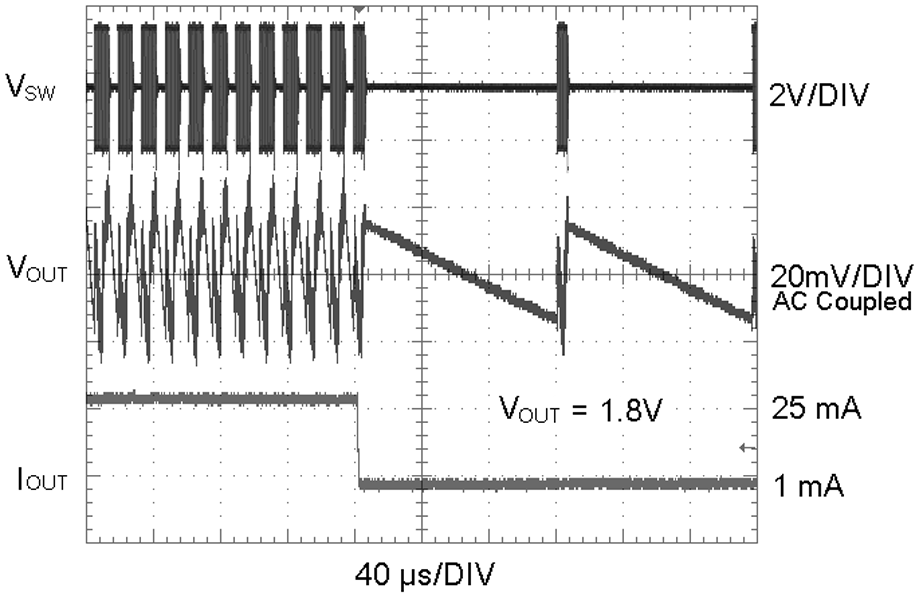
| VOUT = 1.8 V | ECO Mode 25 mA to 1 mA | |
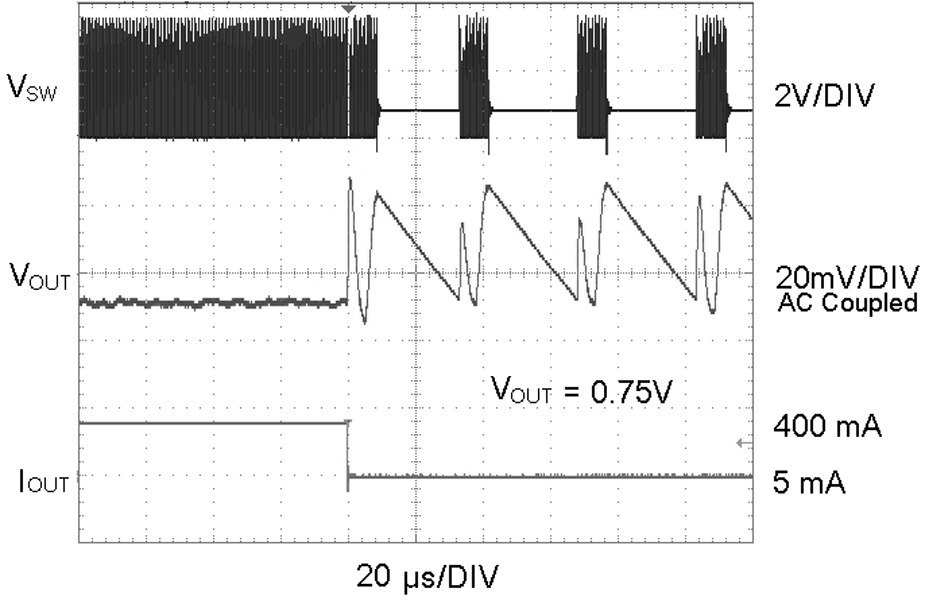
| VOUT = 0.75 V | PWM Mode to ECO Mode | |
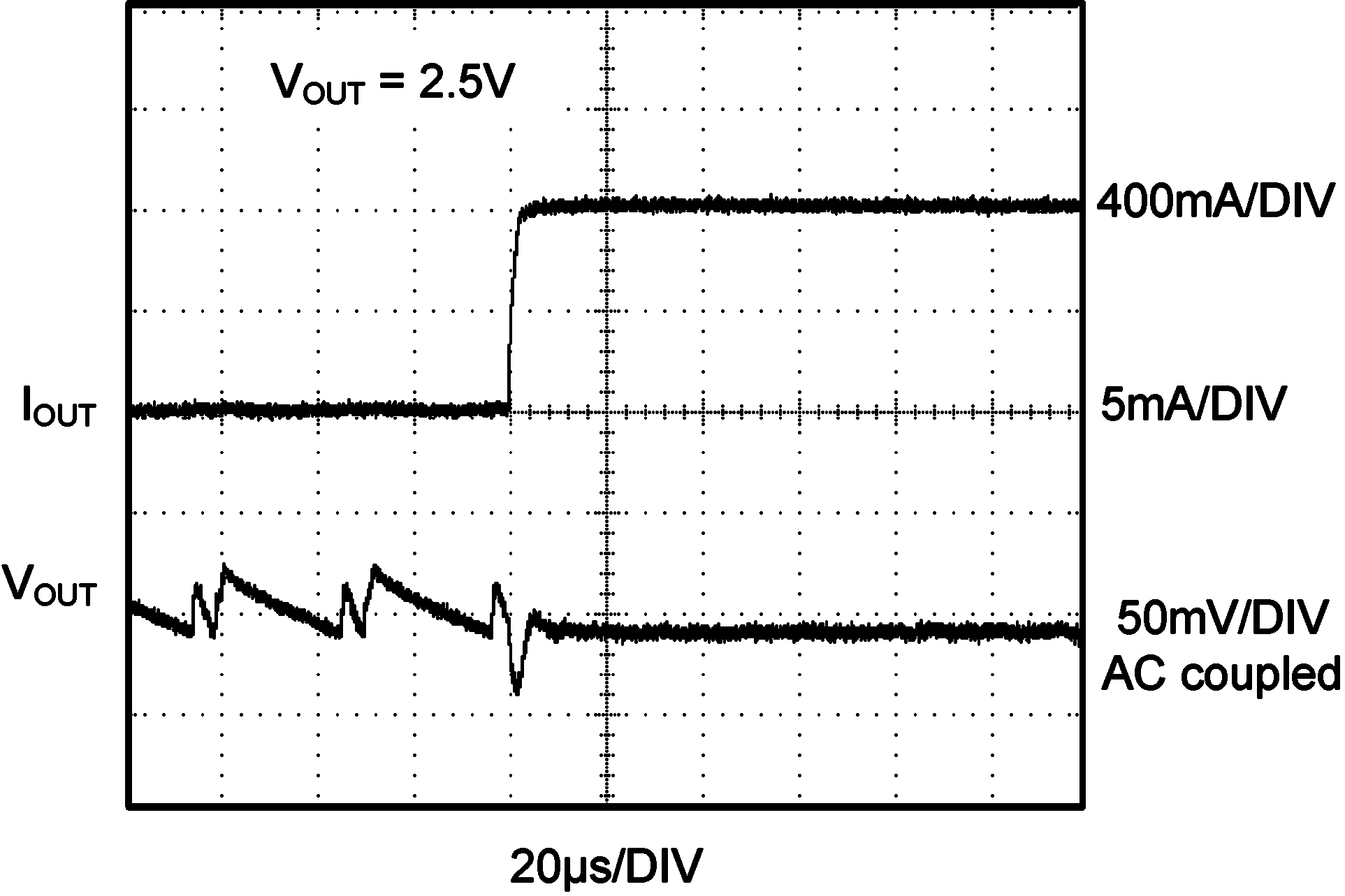
| VOUT = 2.5 V | ECO Mode to PWM Mode | |
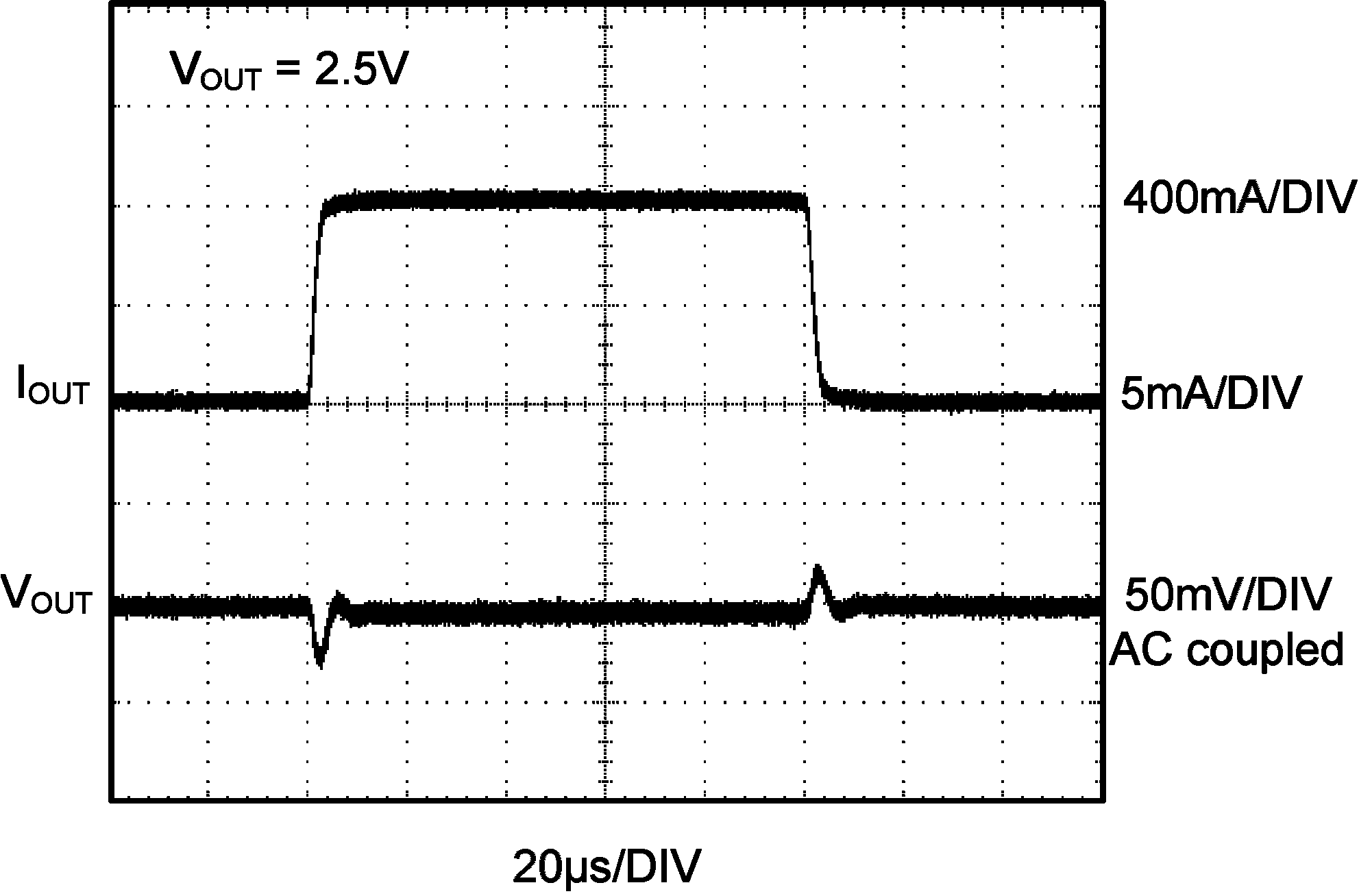
| VOUT = 1.8 V | FPWM Mode |
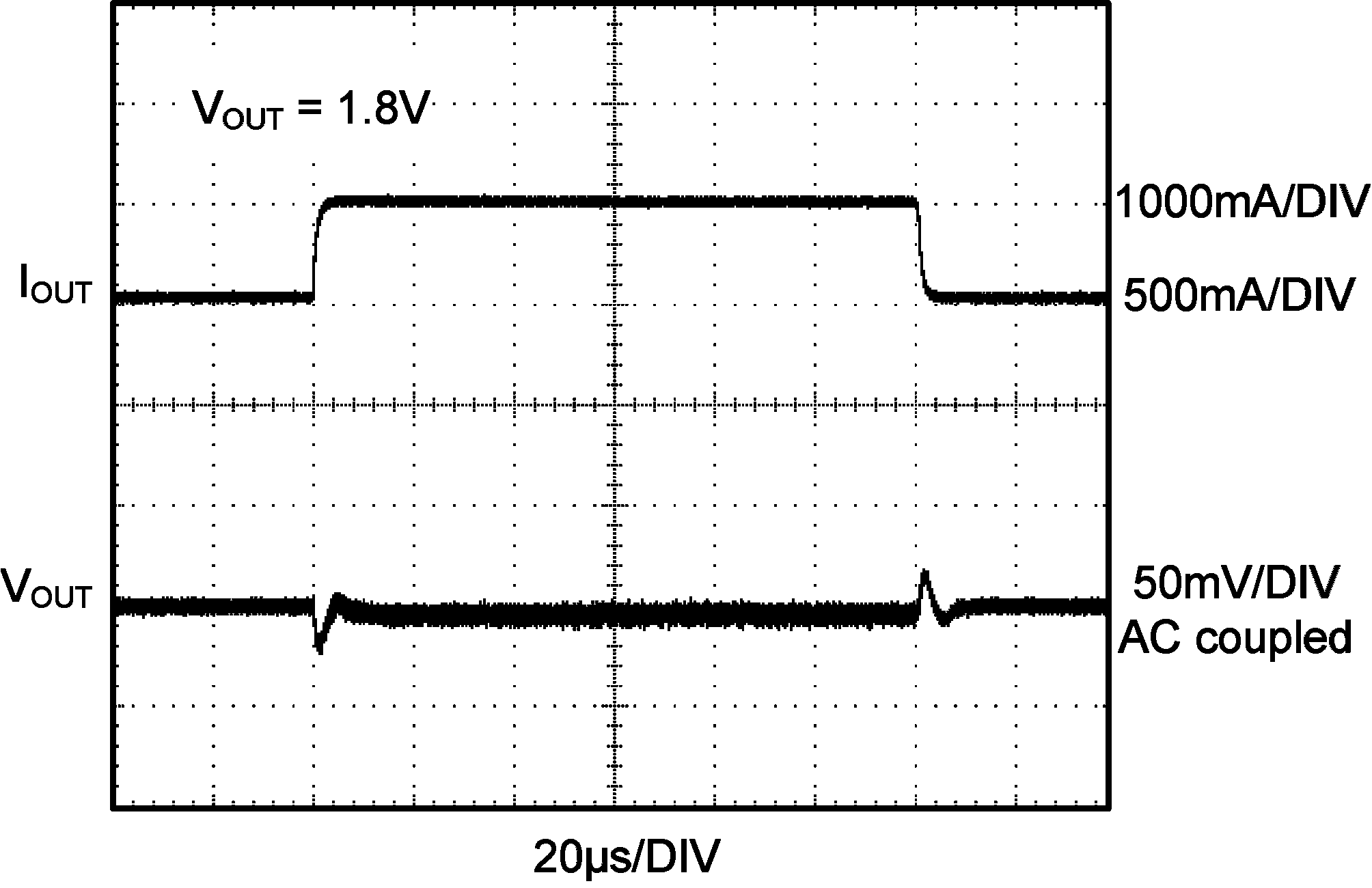
| VOUT = 1.8 V | PWM Mode | |
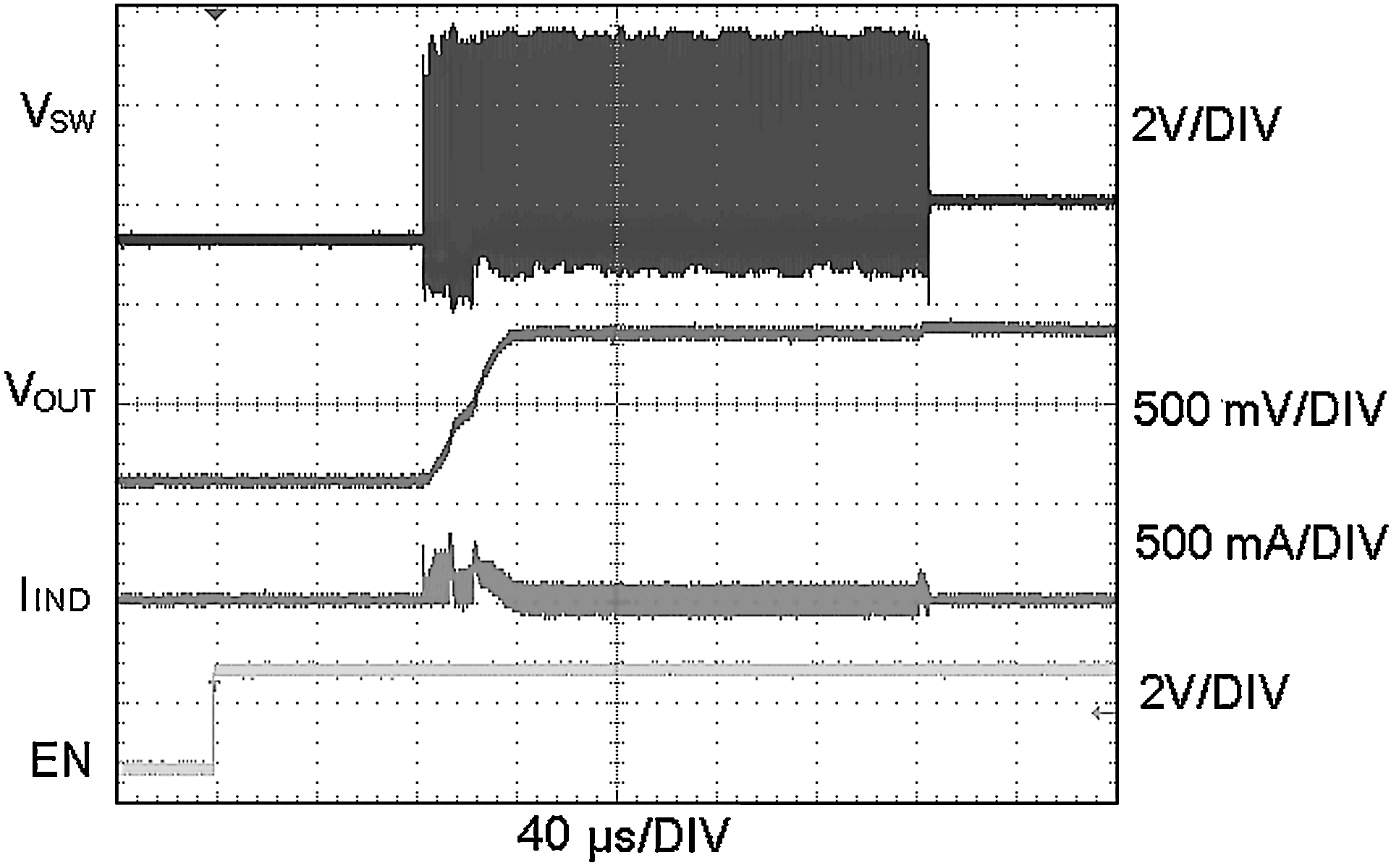
| VOUT = 0.75 V | ROUT = 750 Ω |
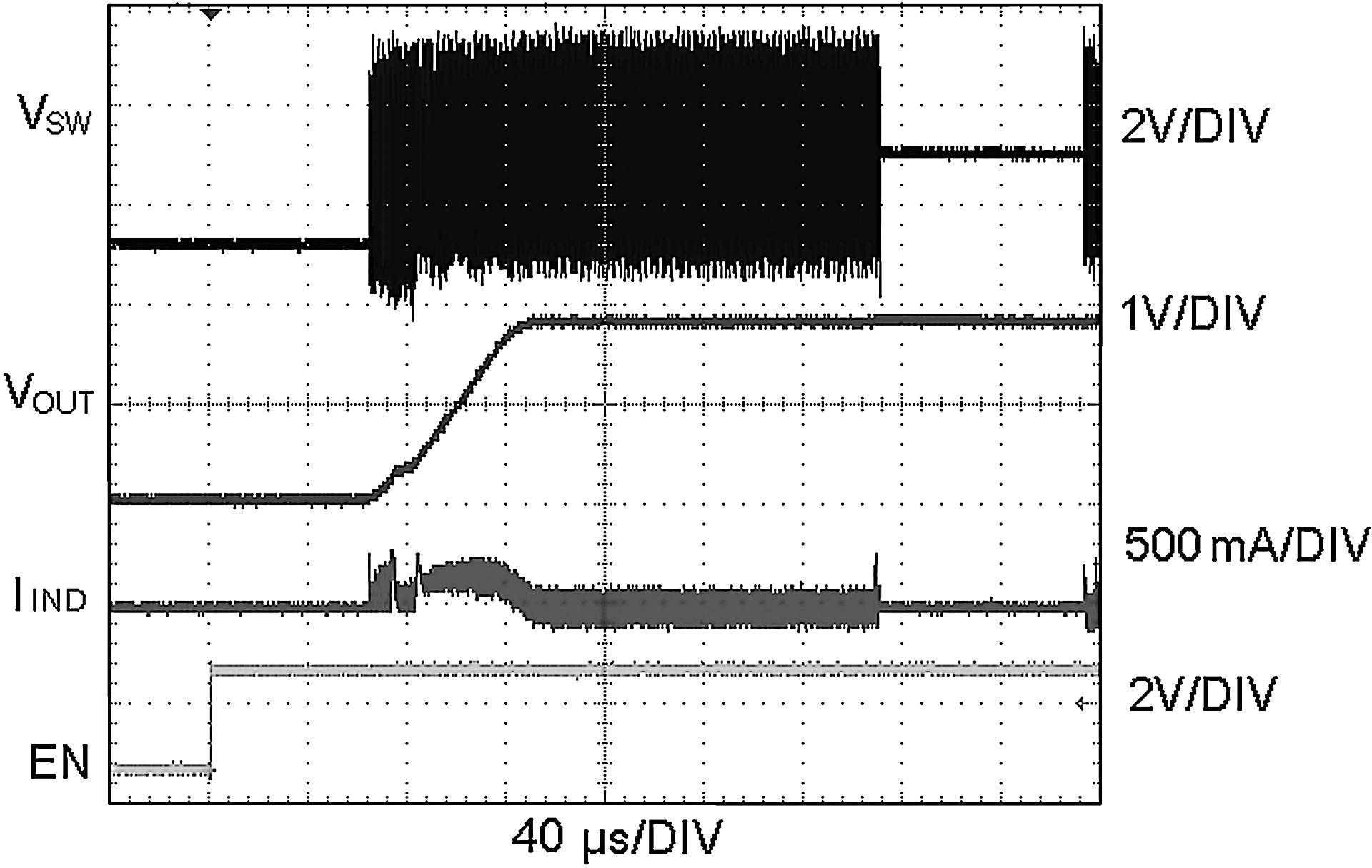
| VOUT = 1.8 V | ROUT = 1.8 kΩ |